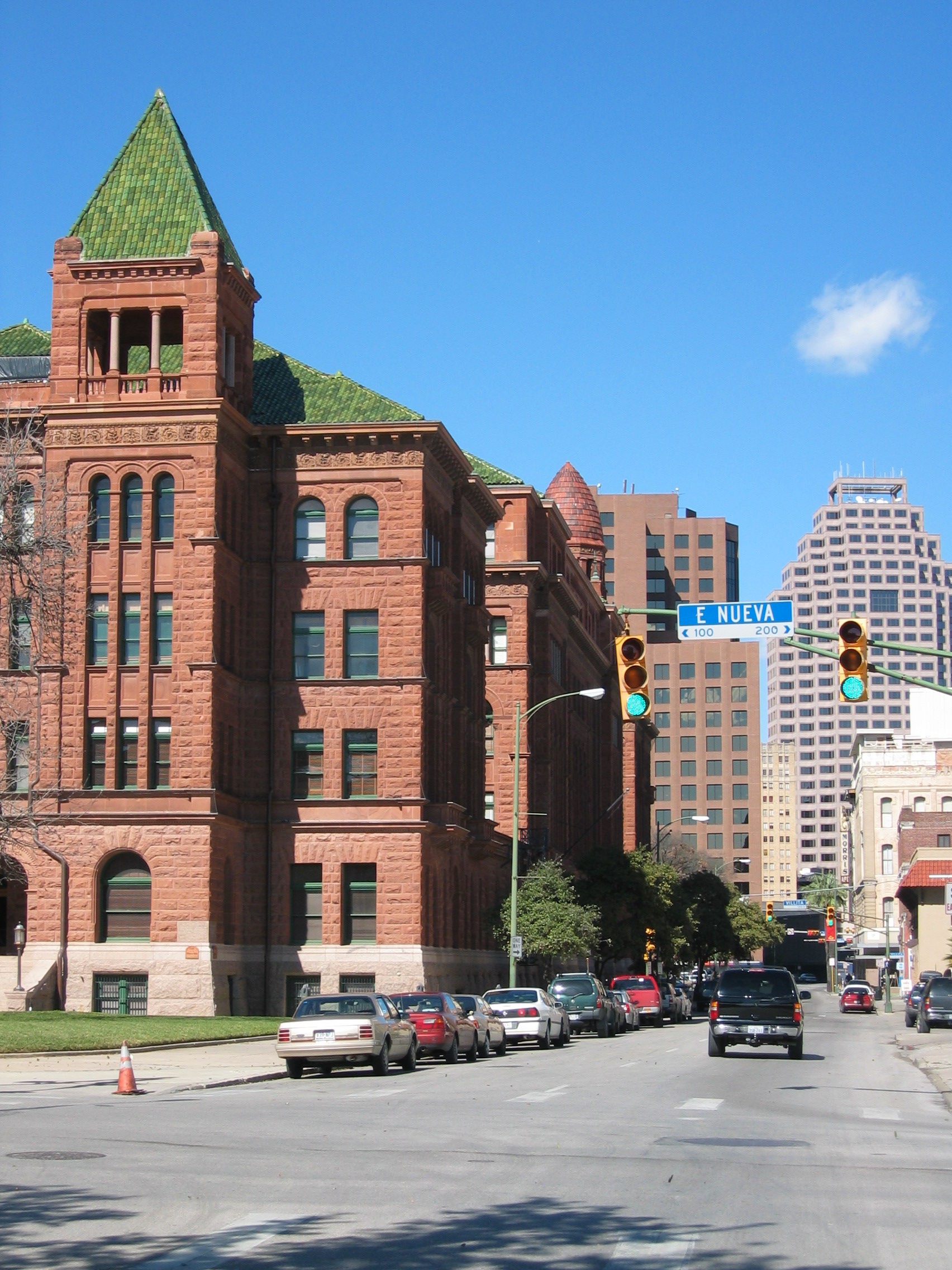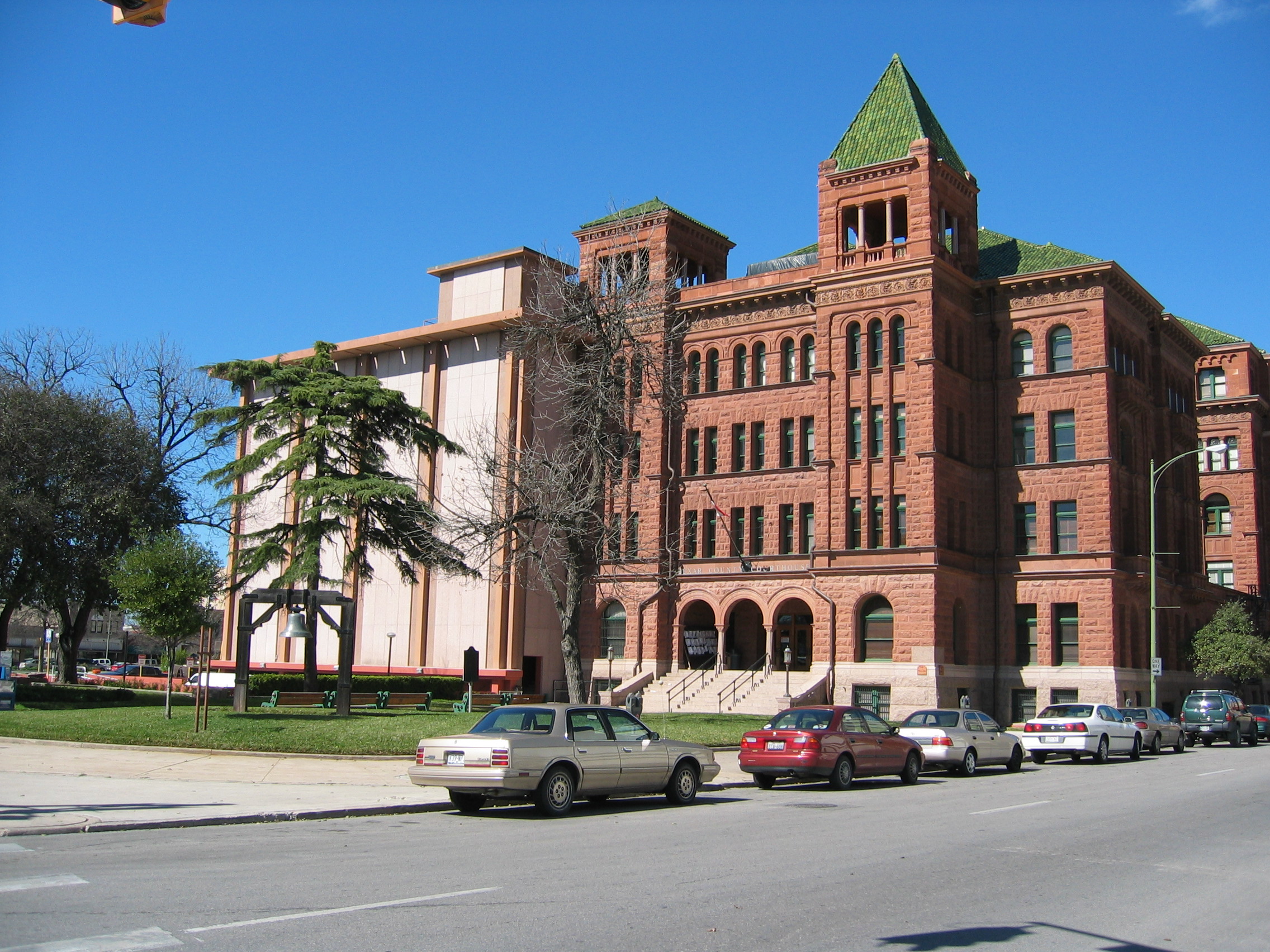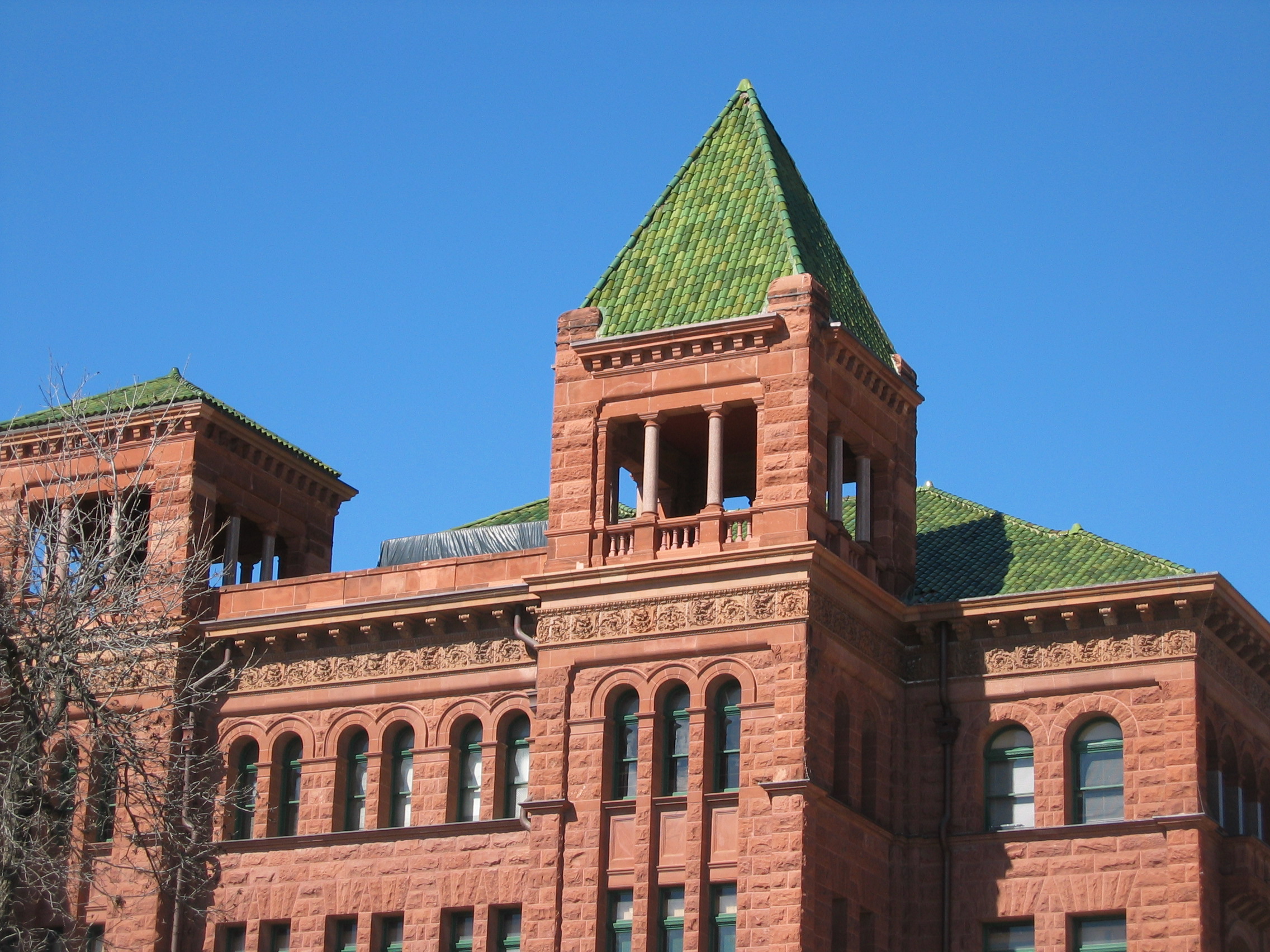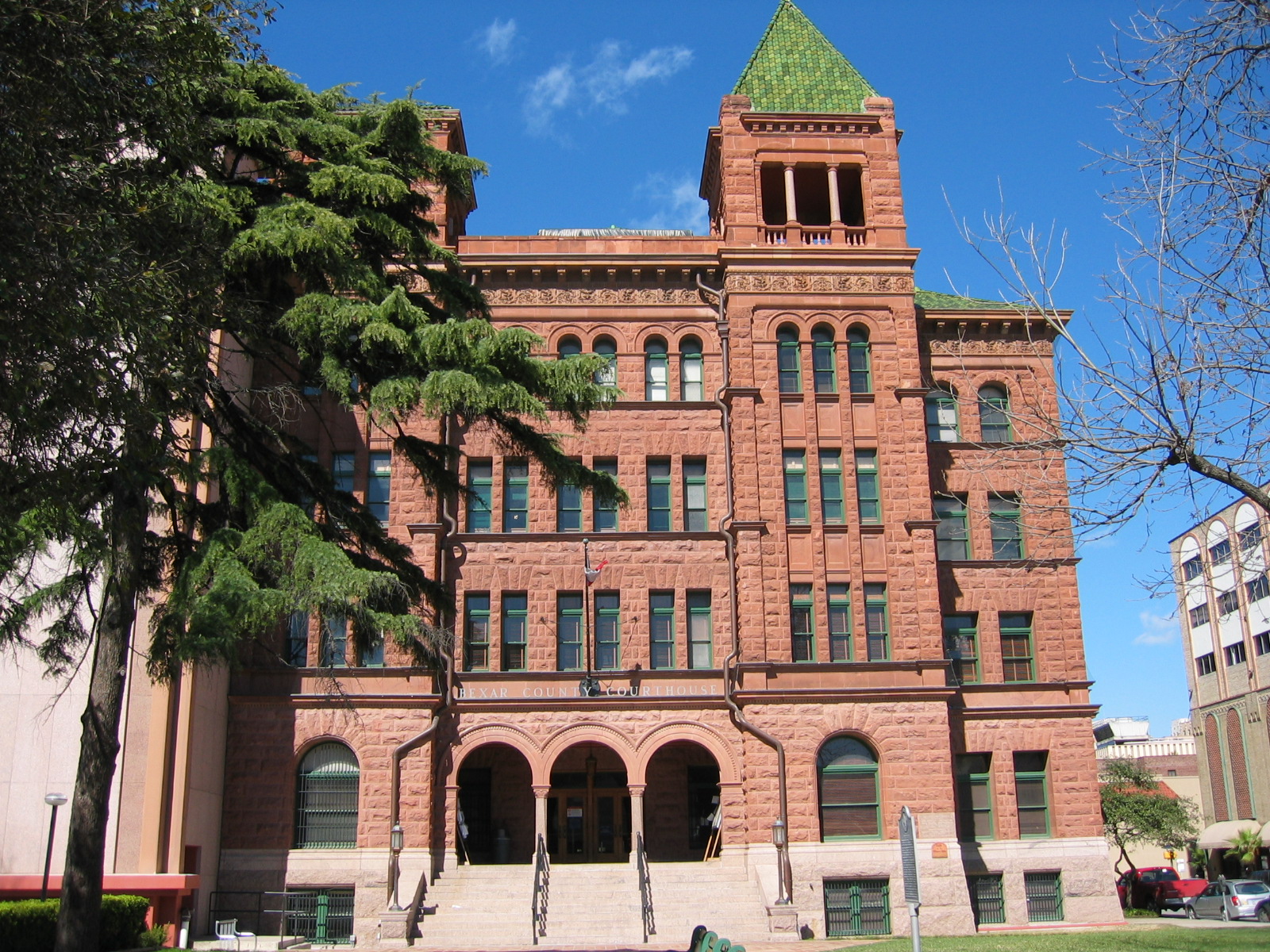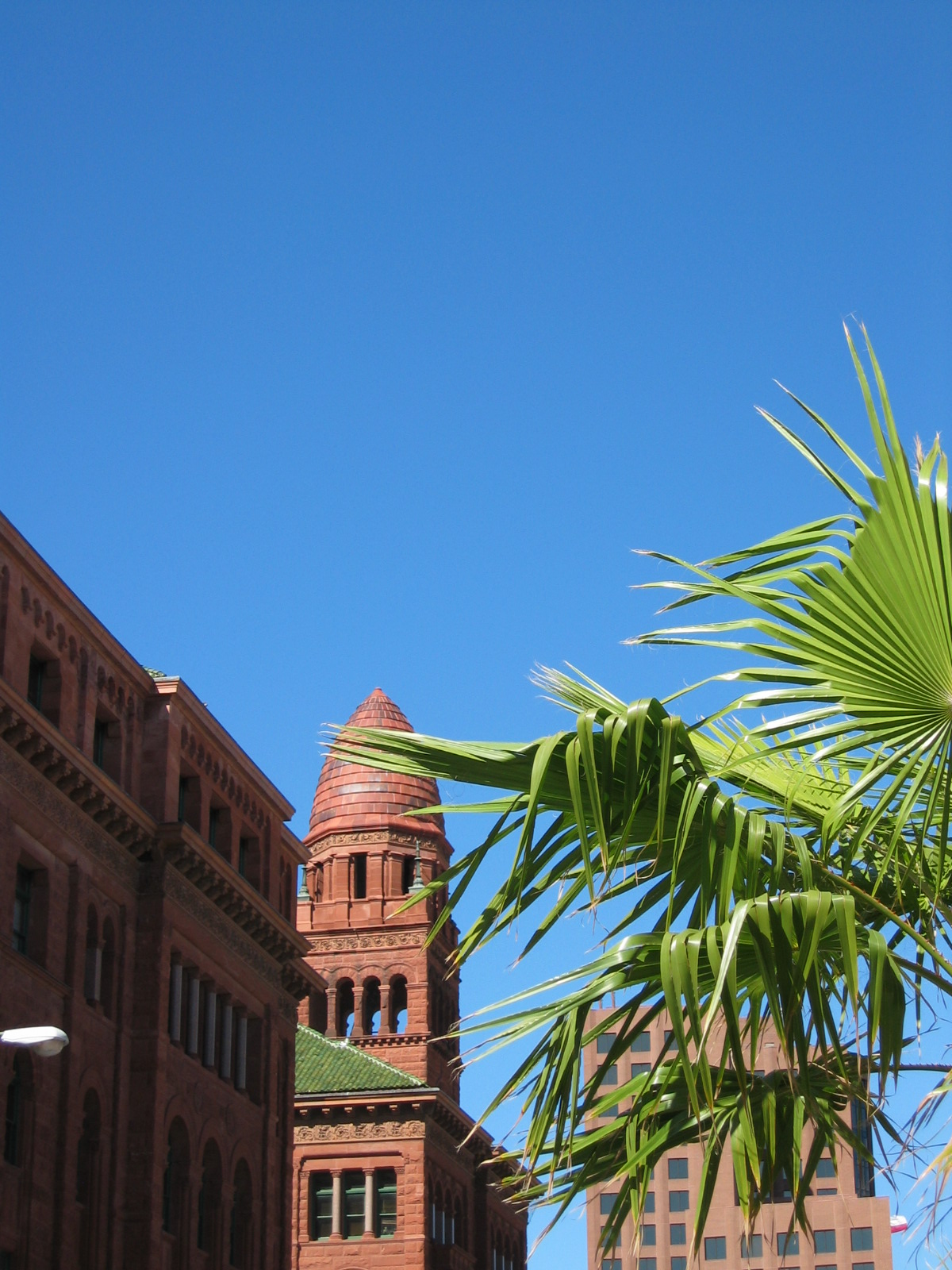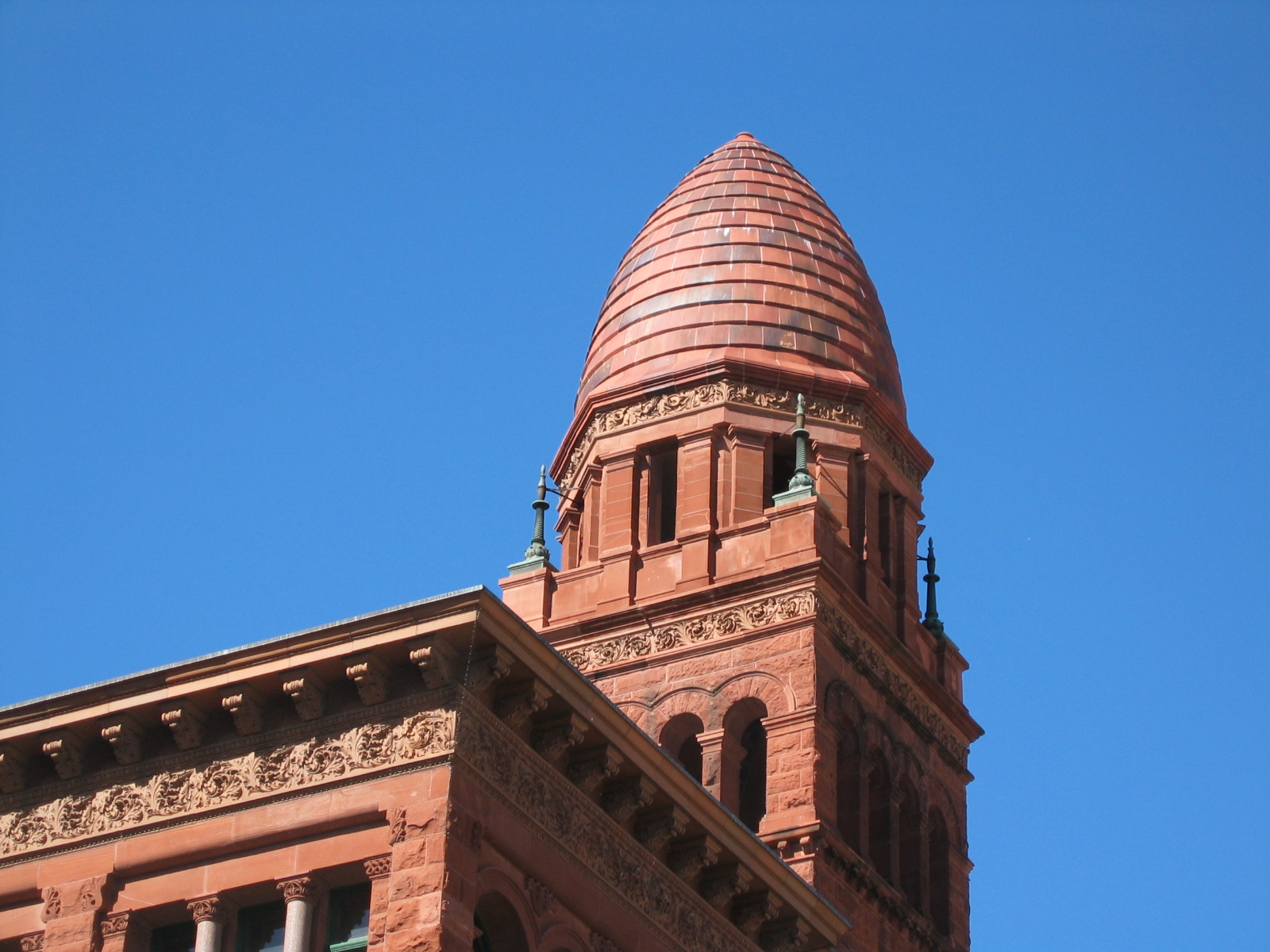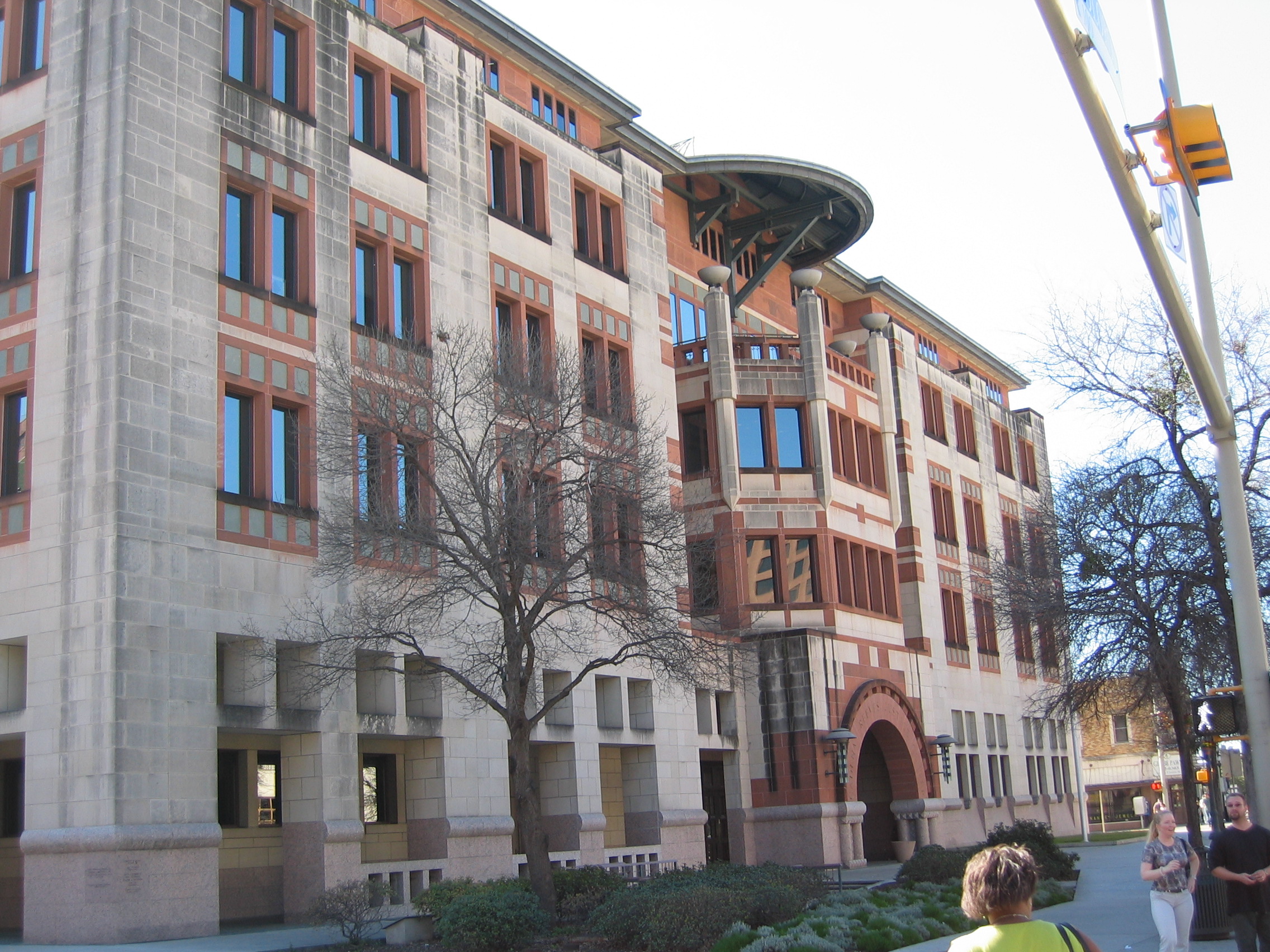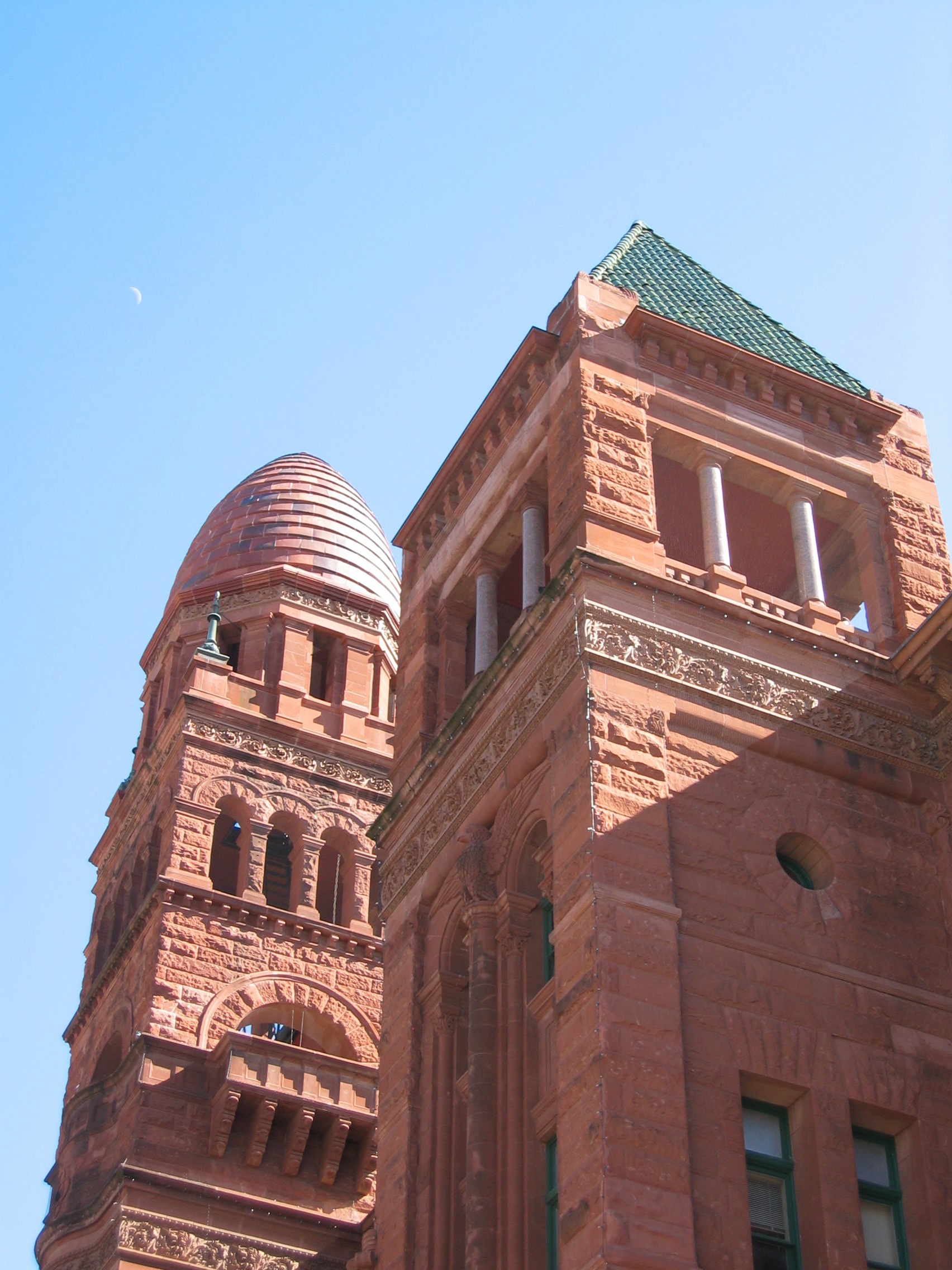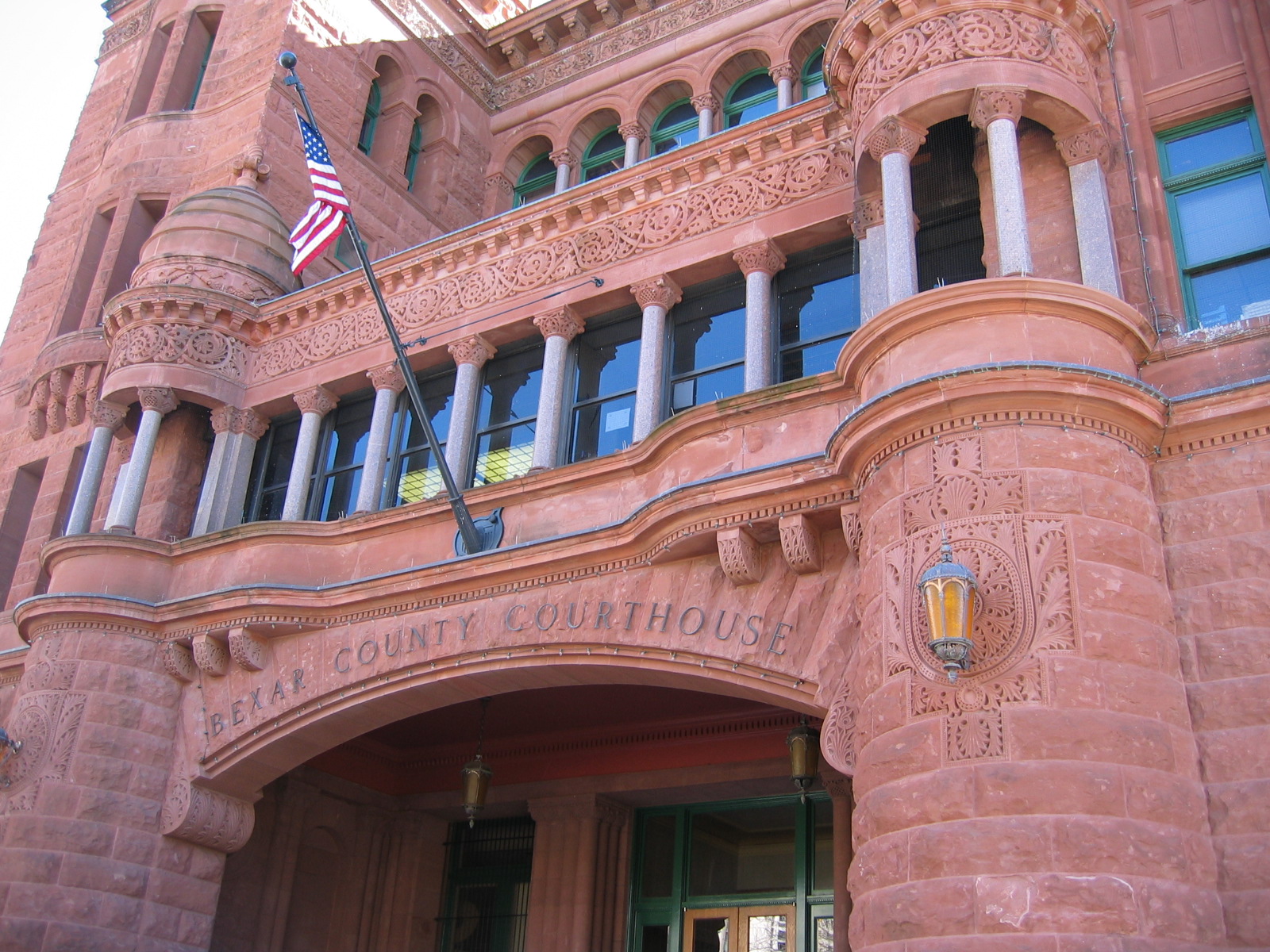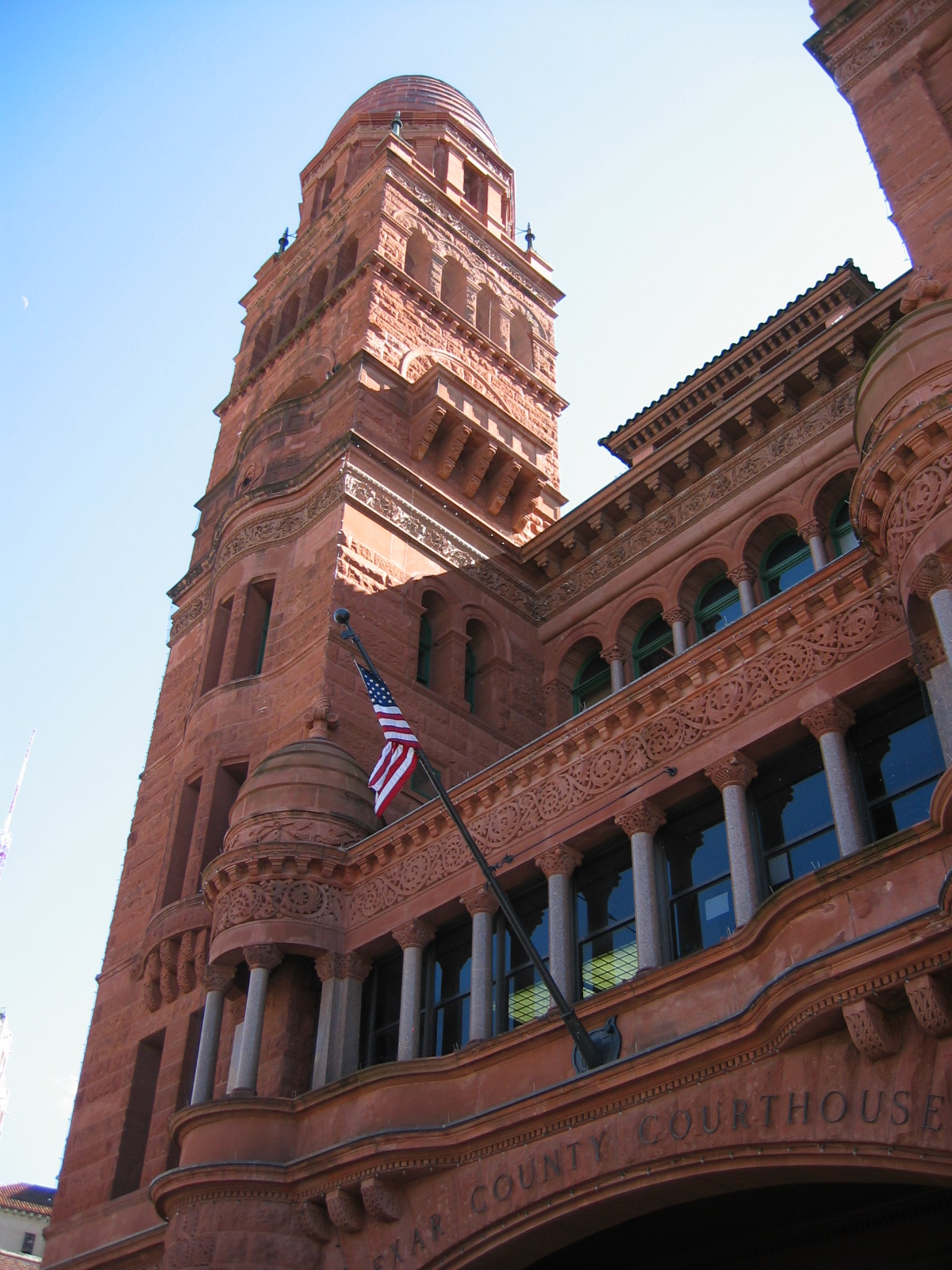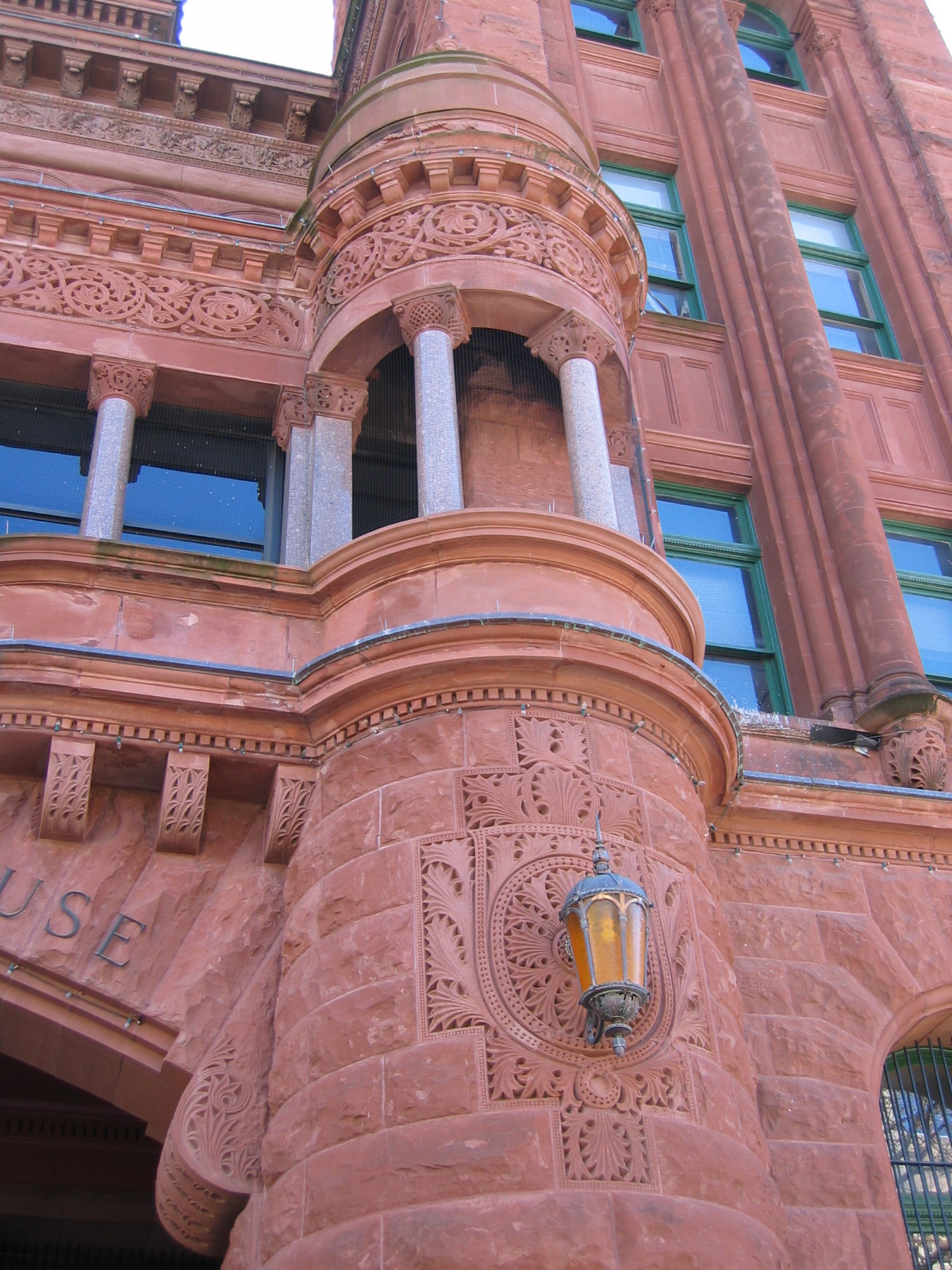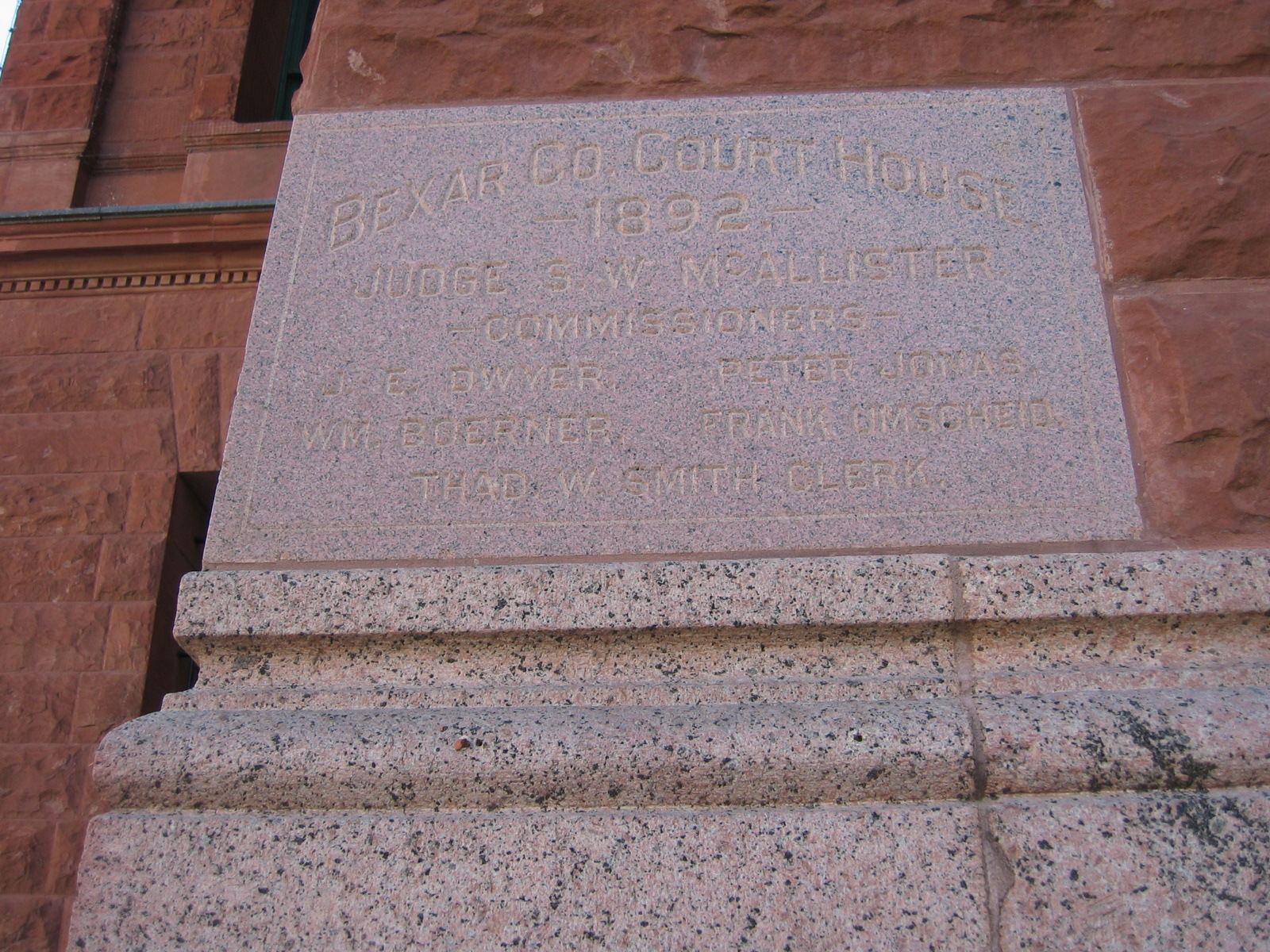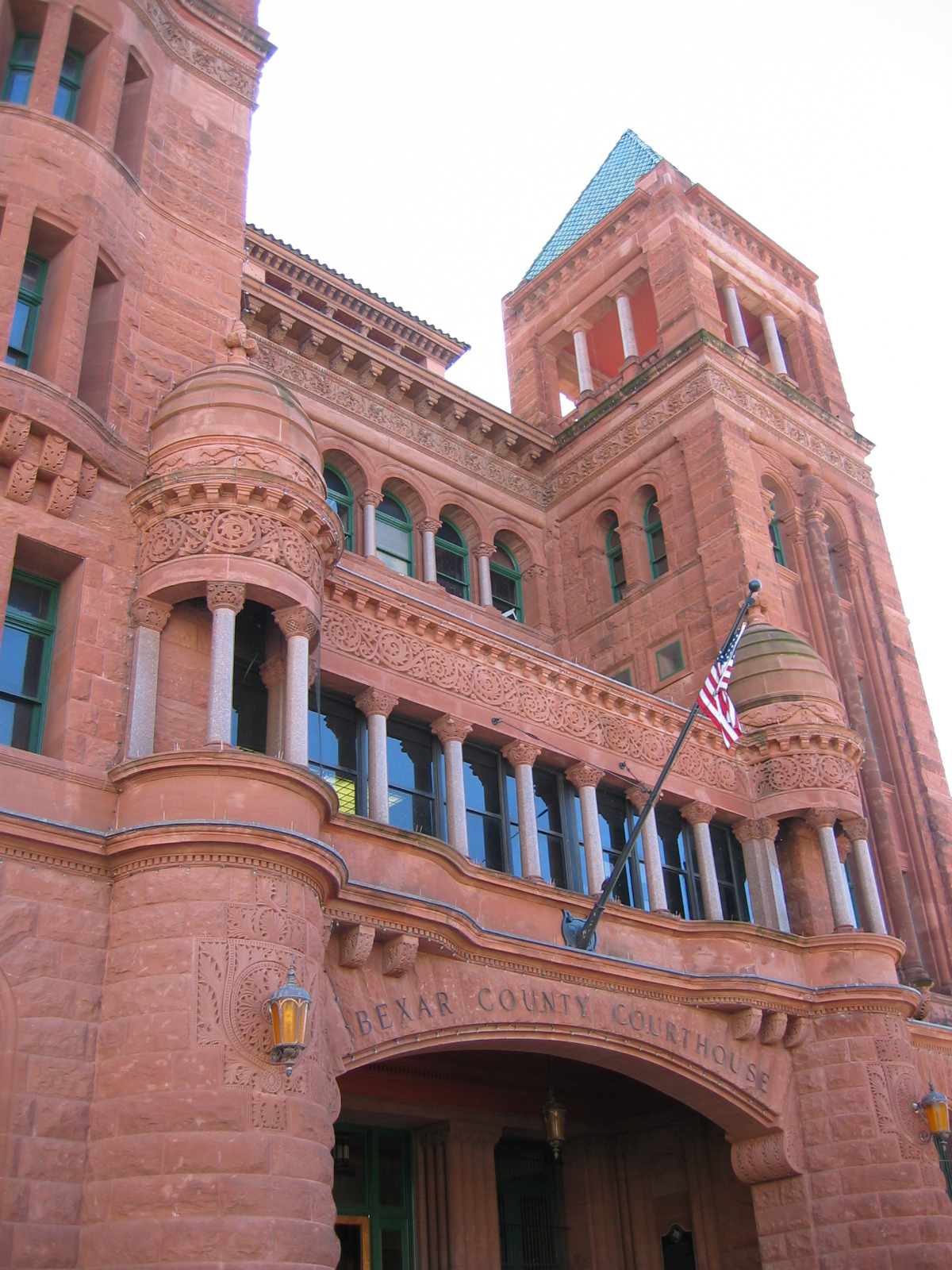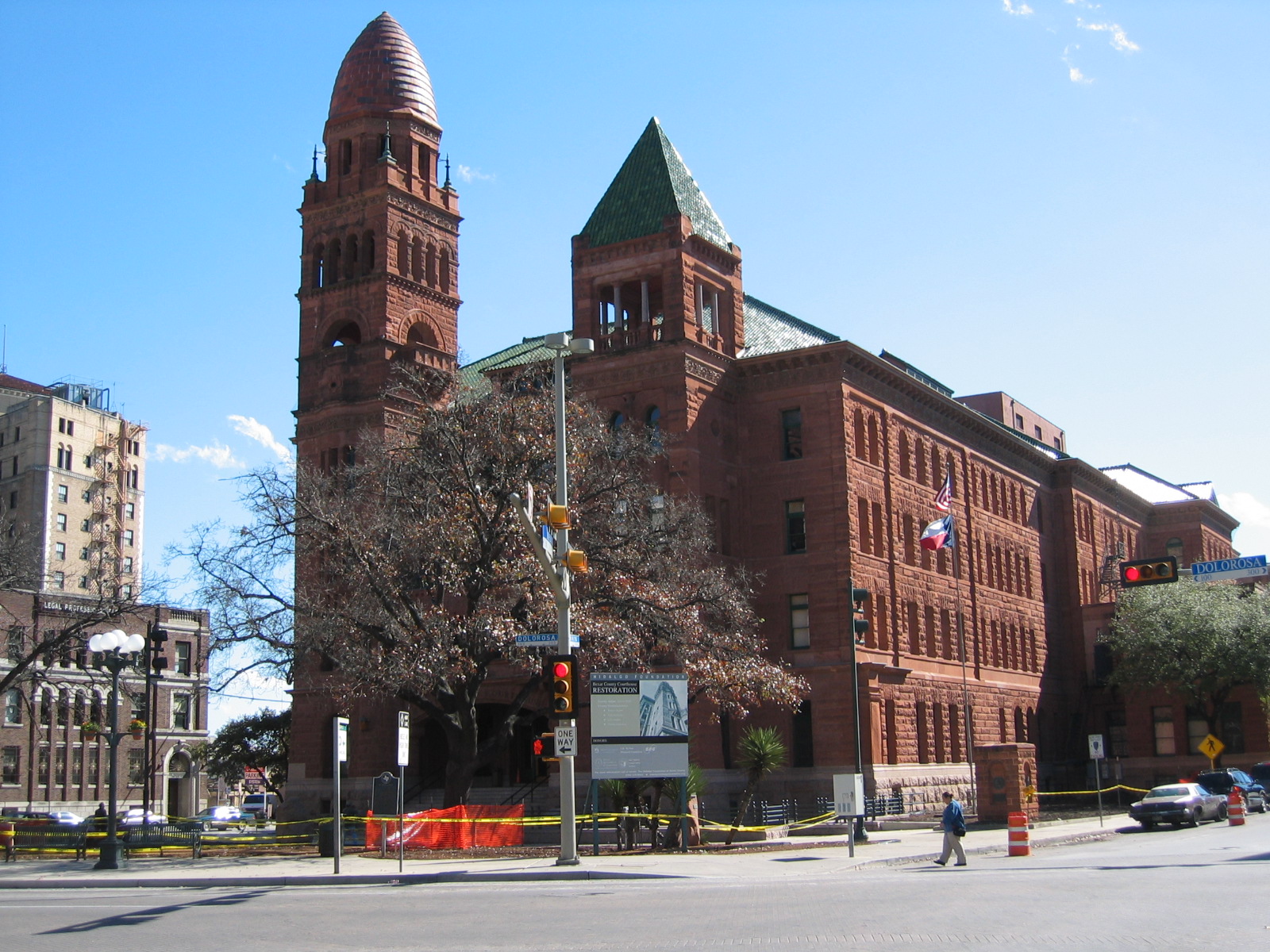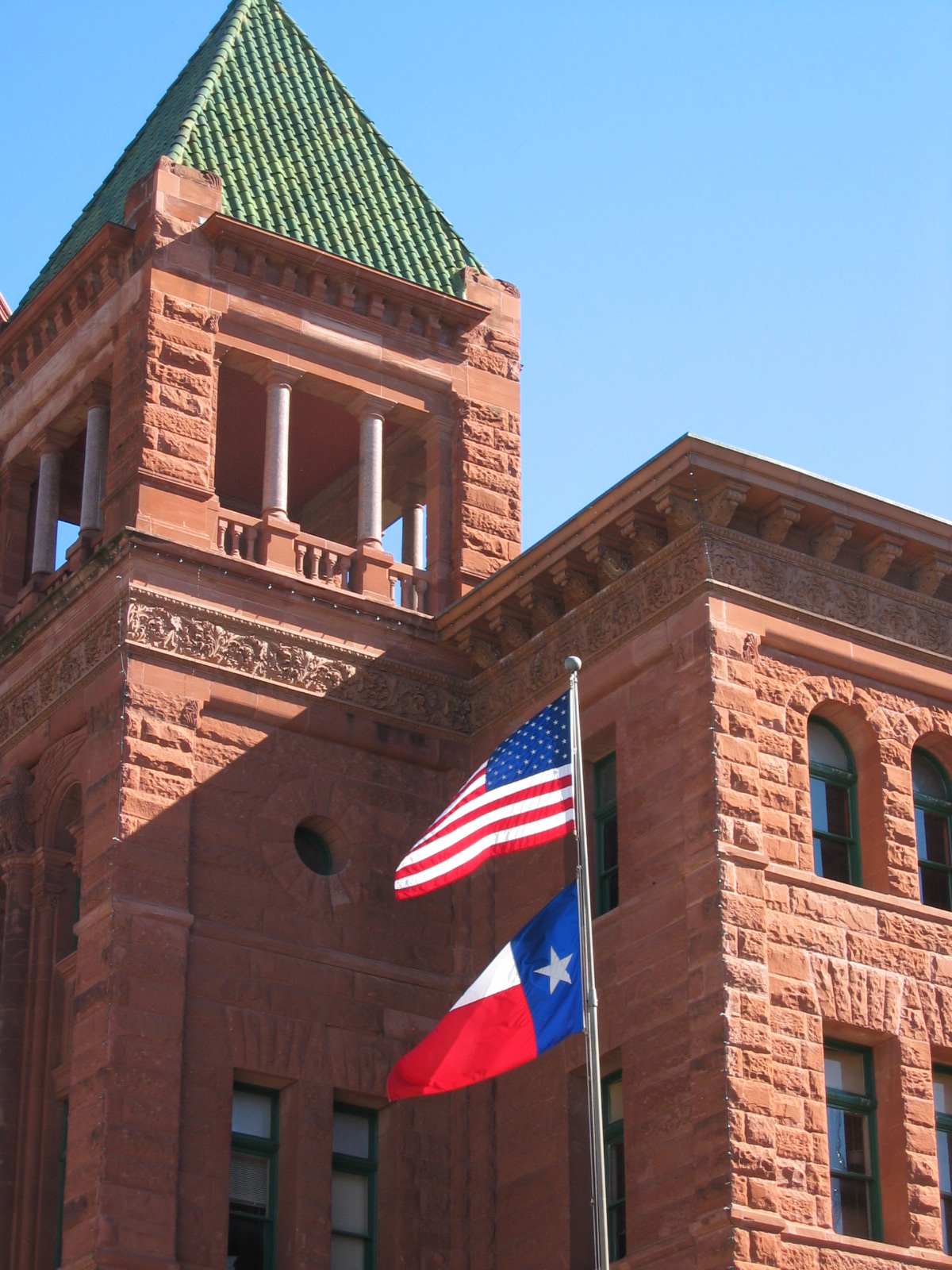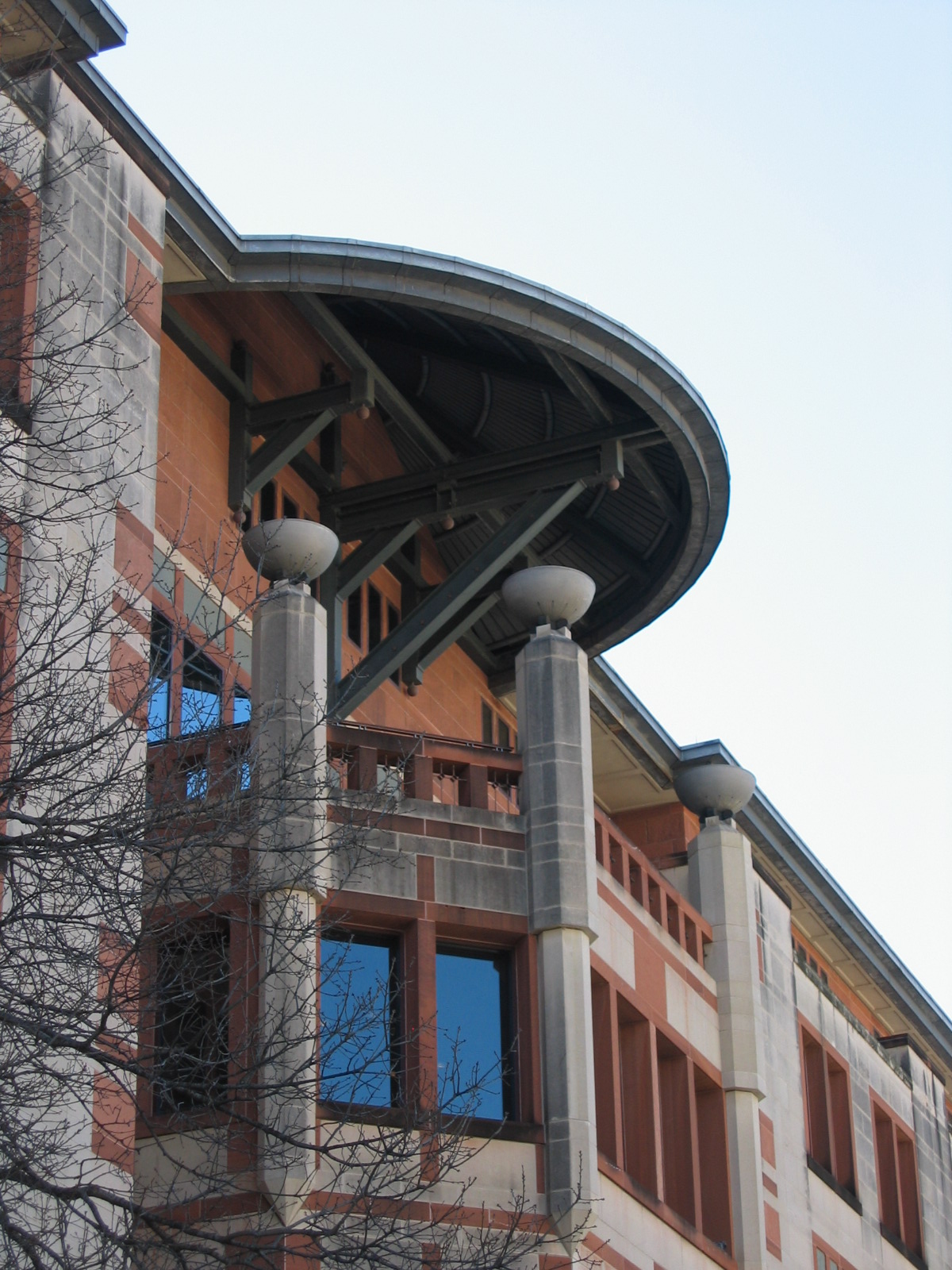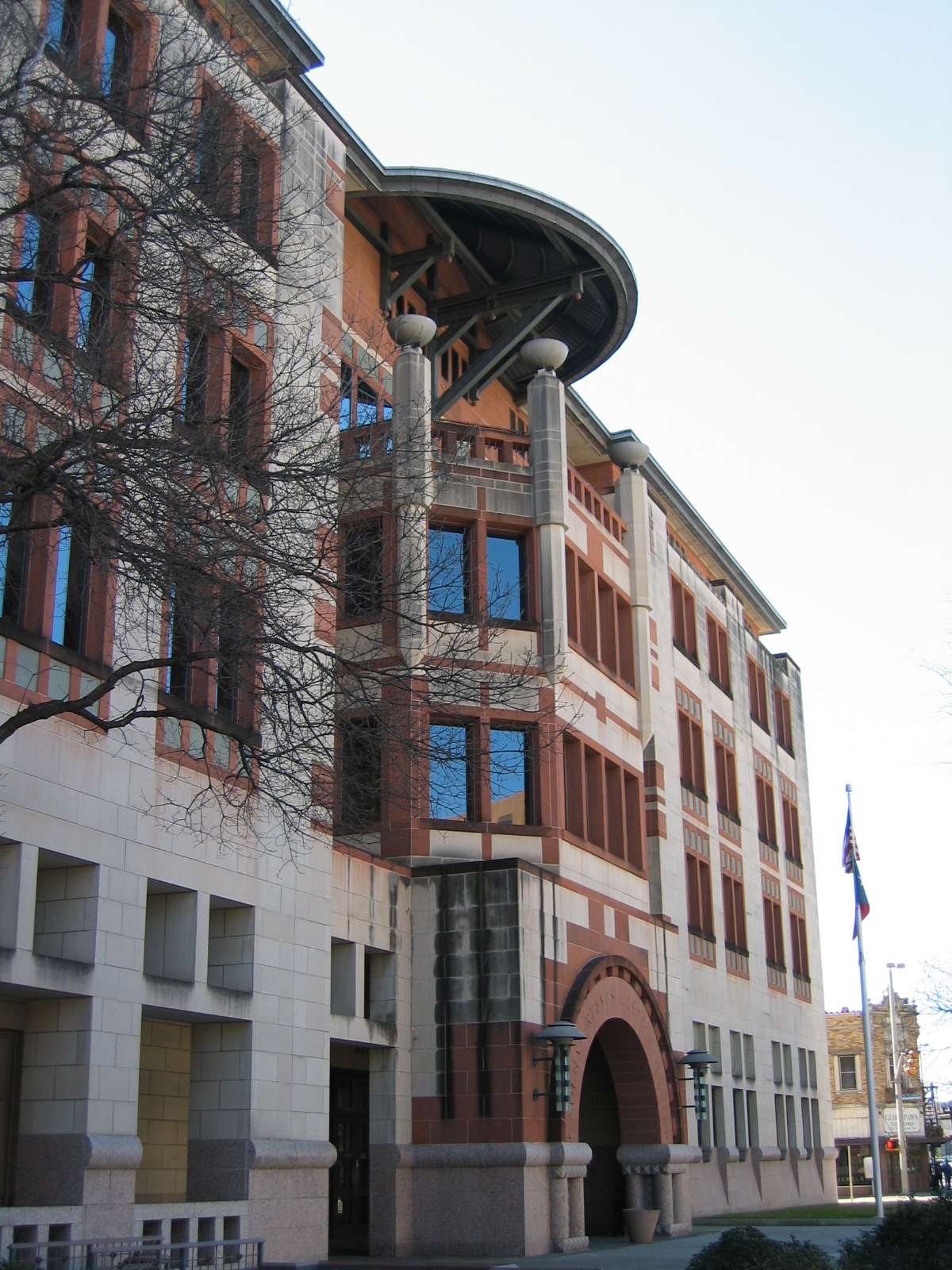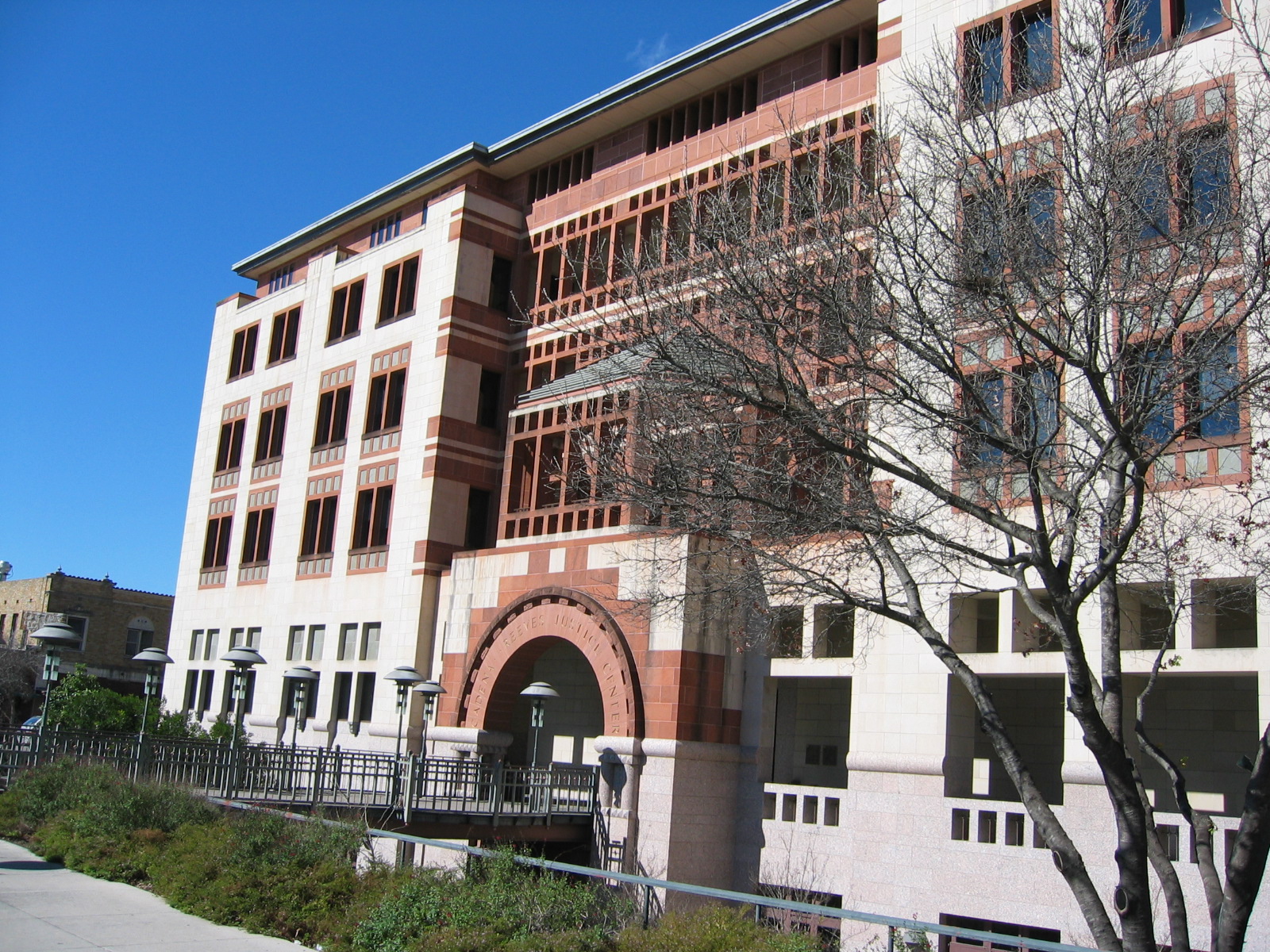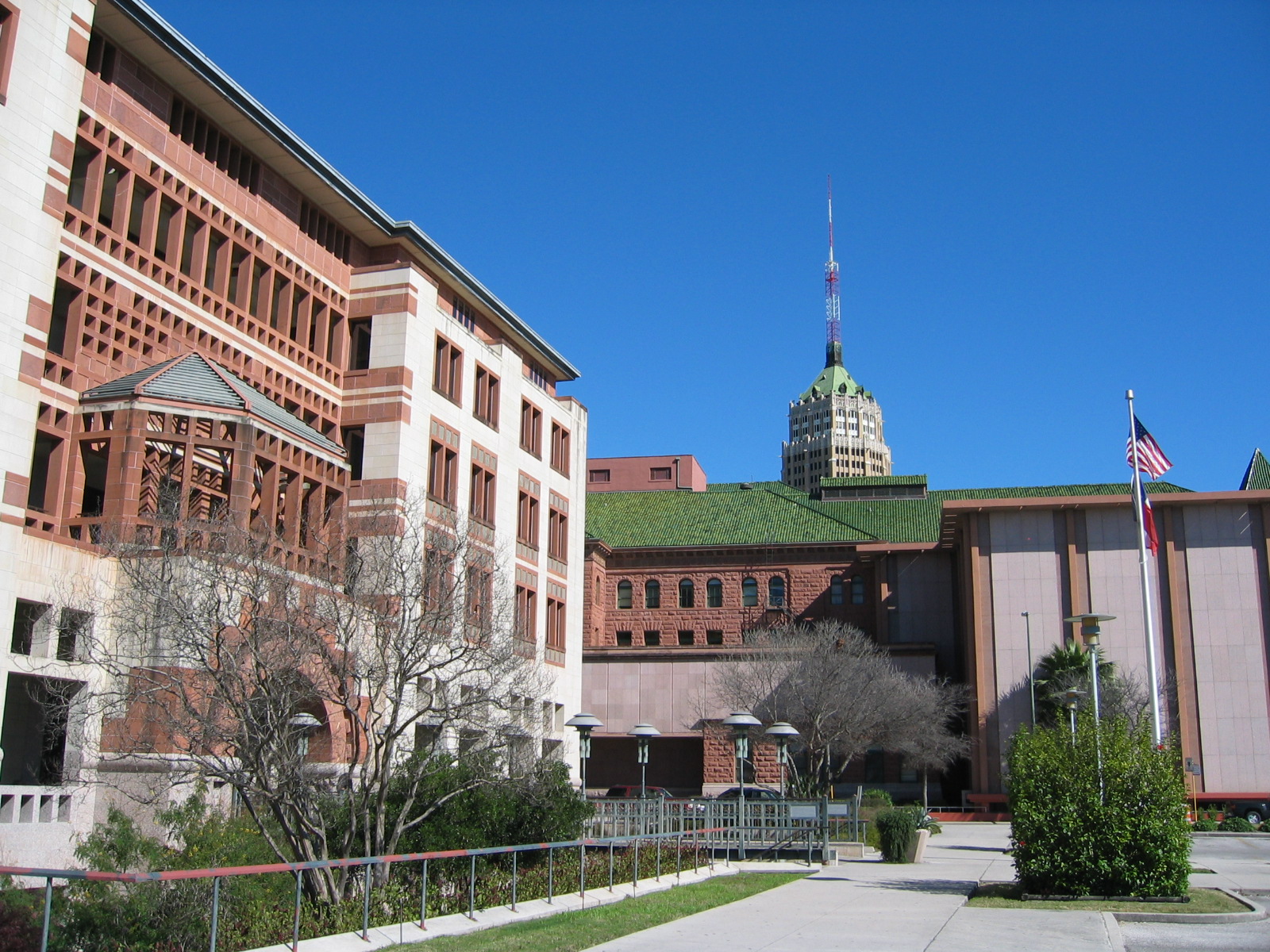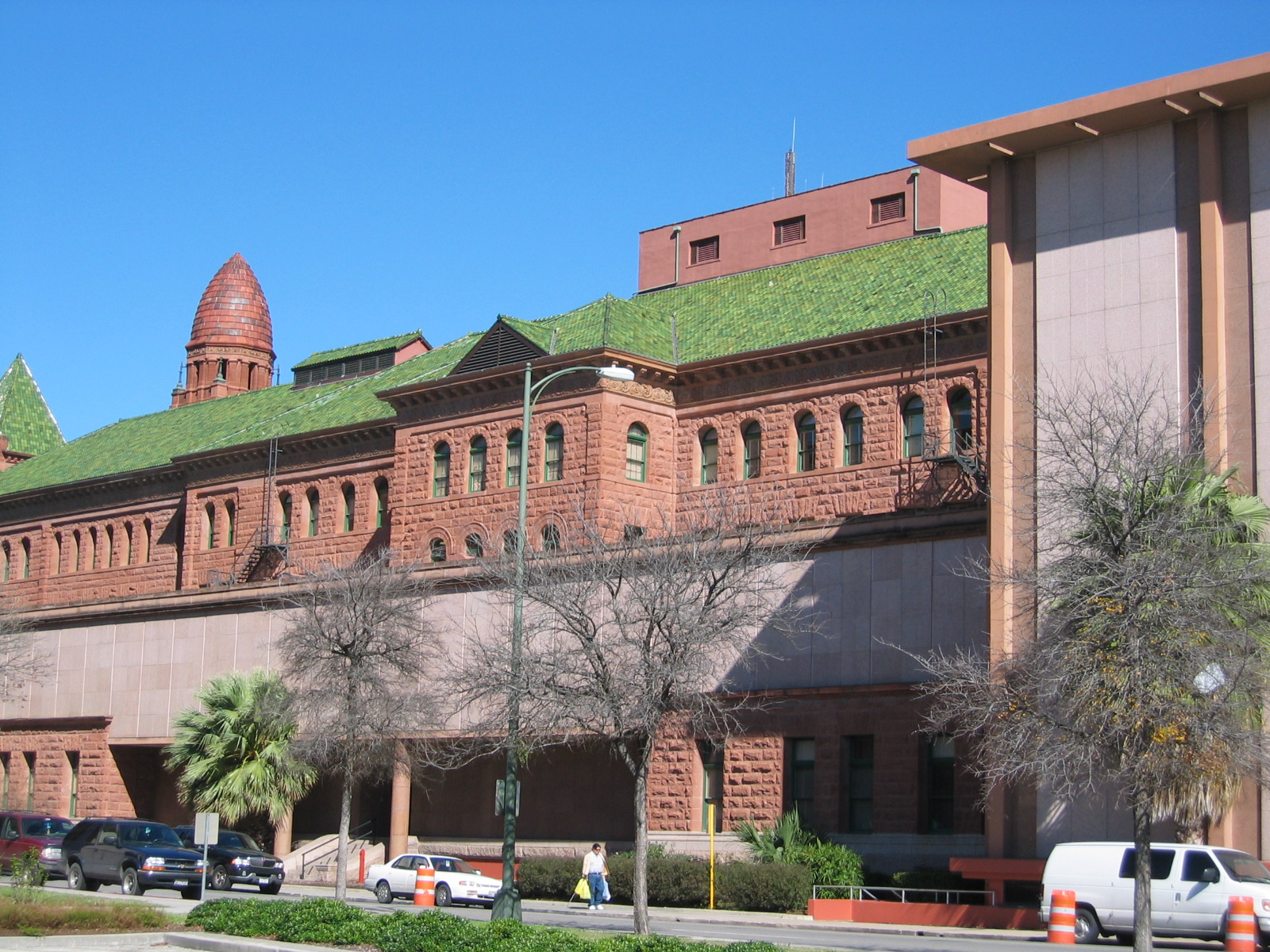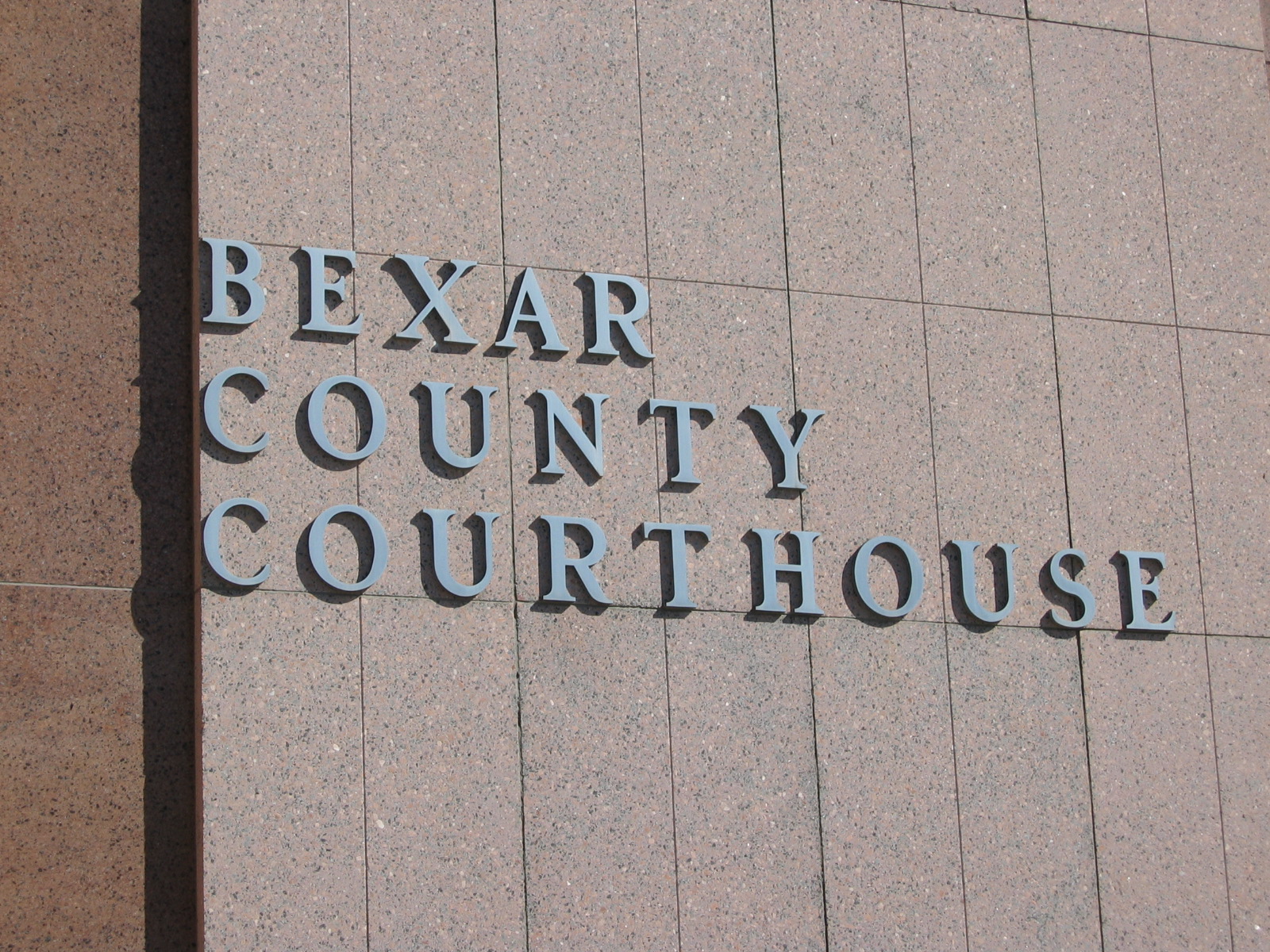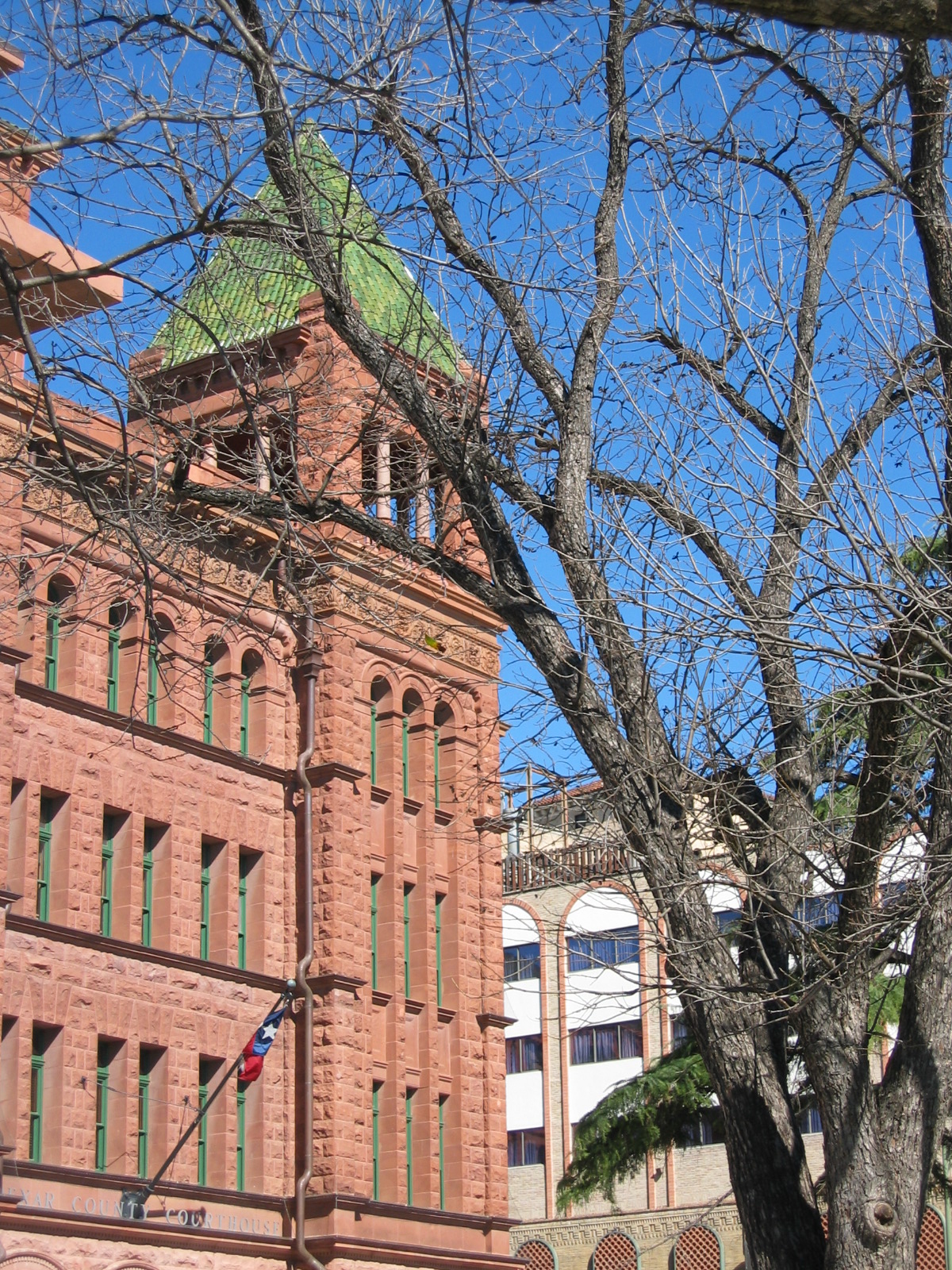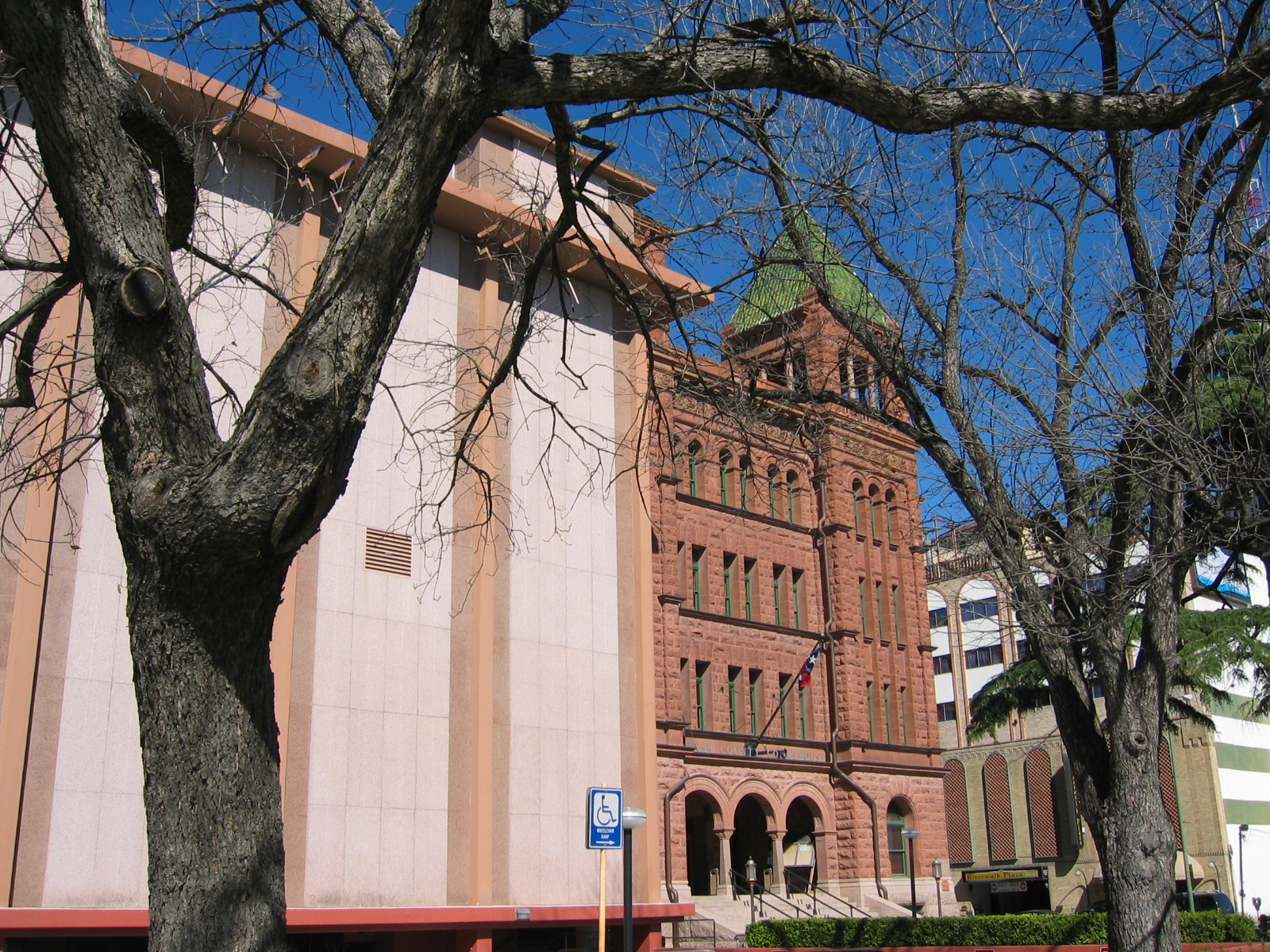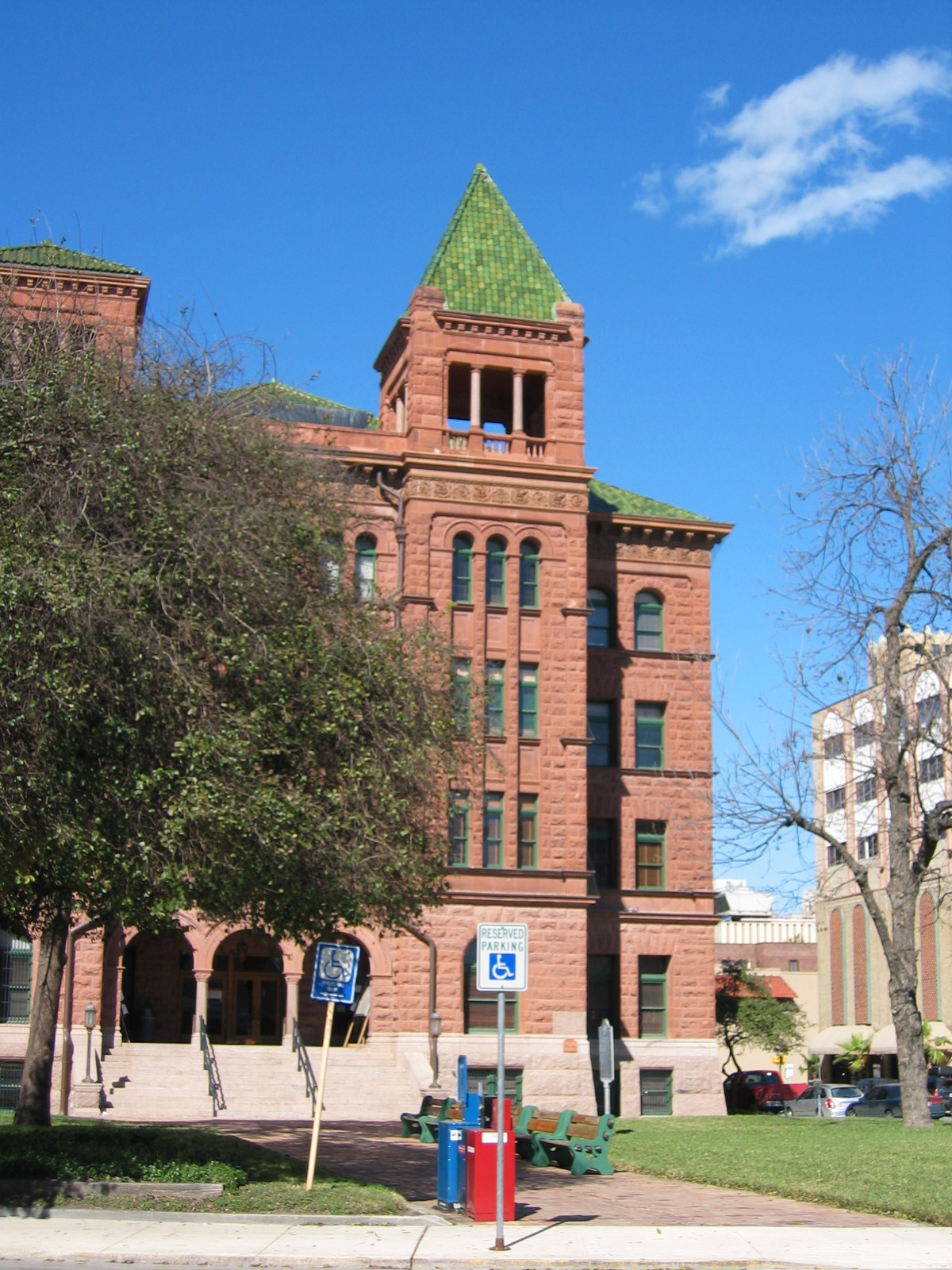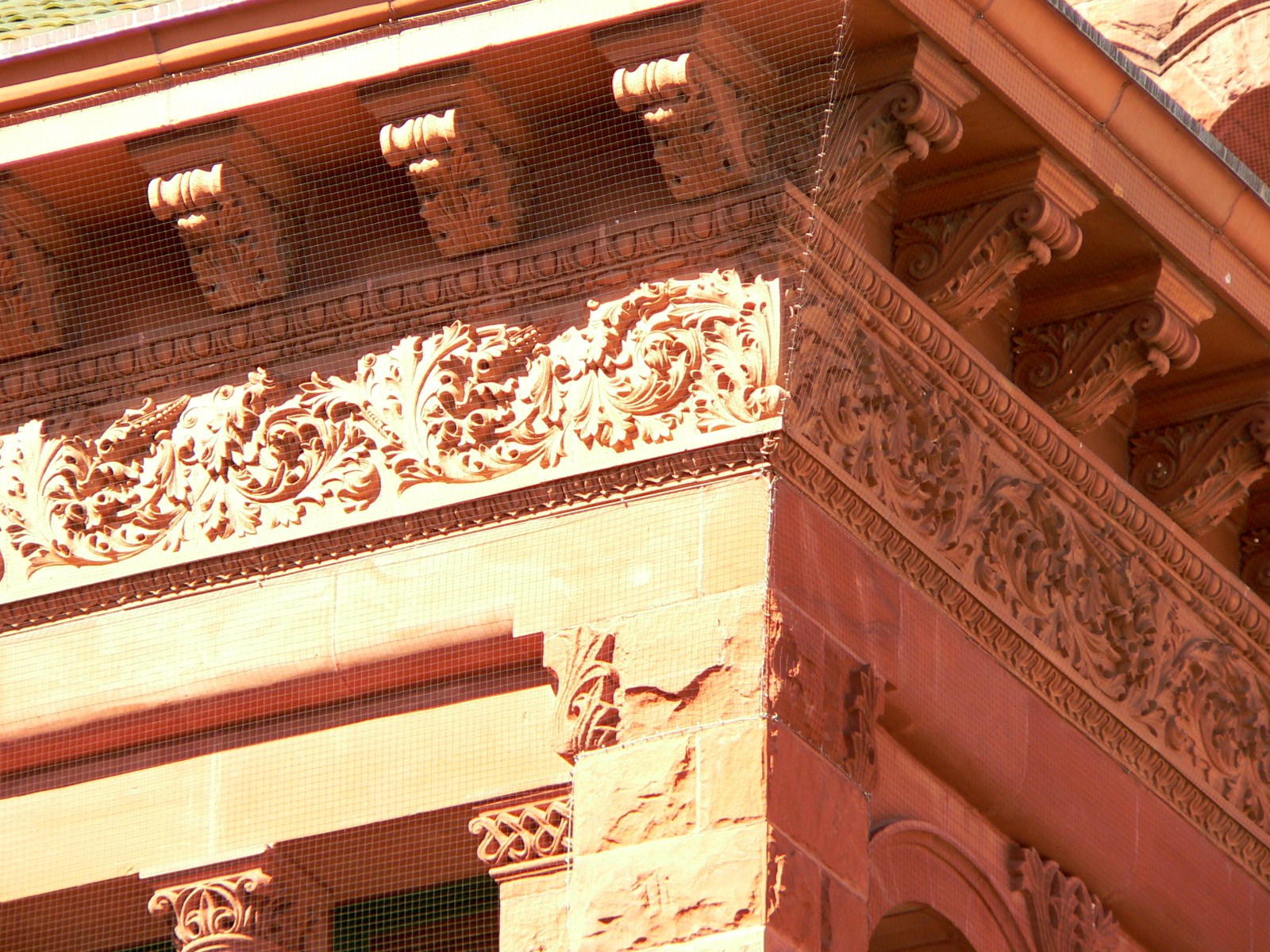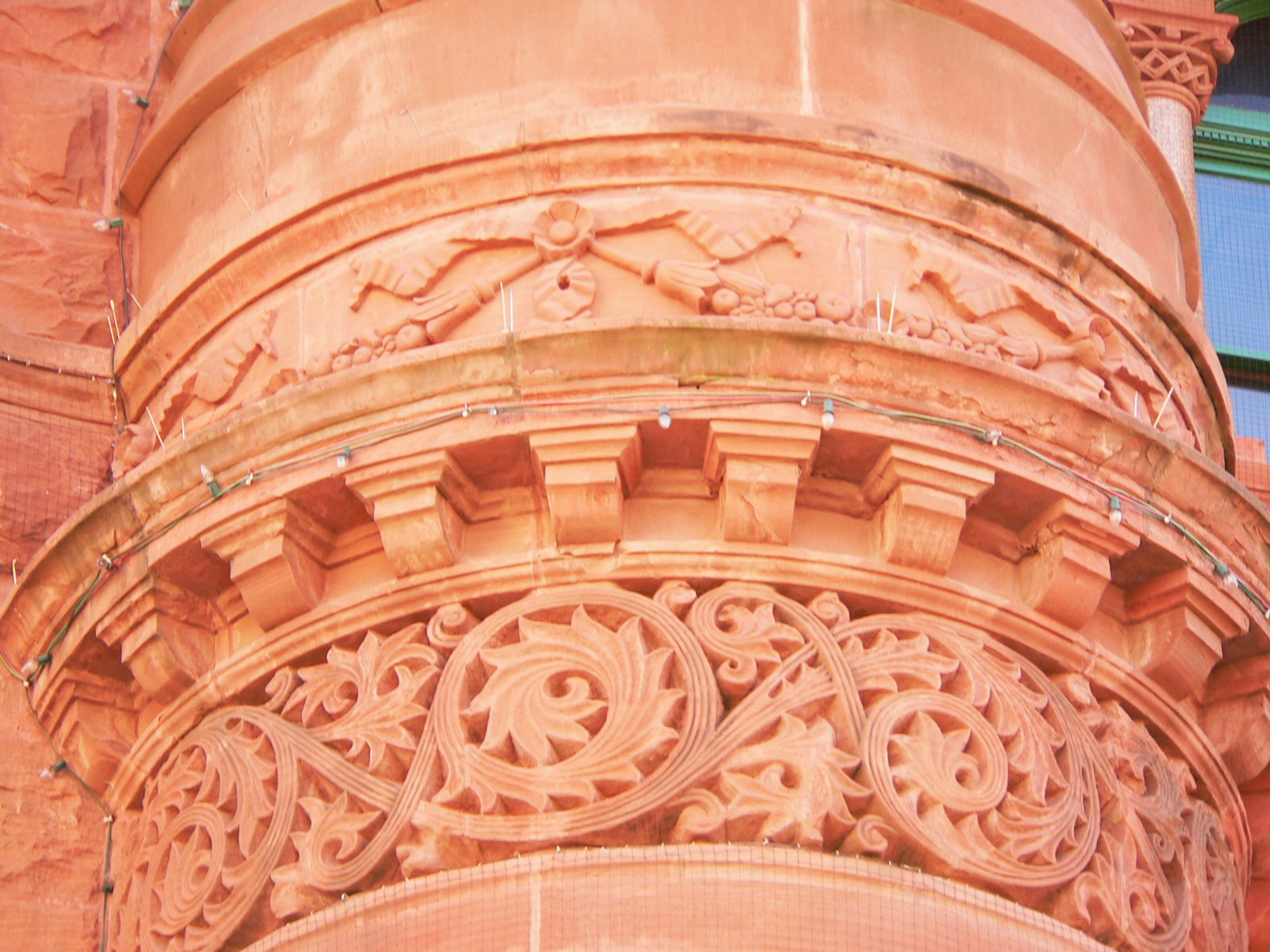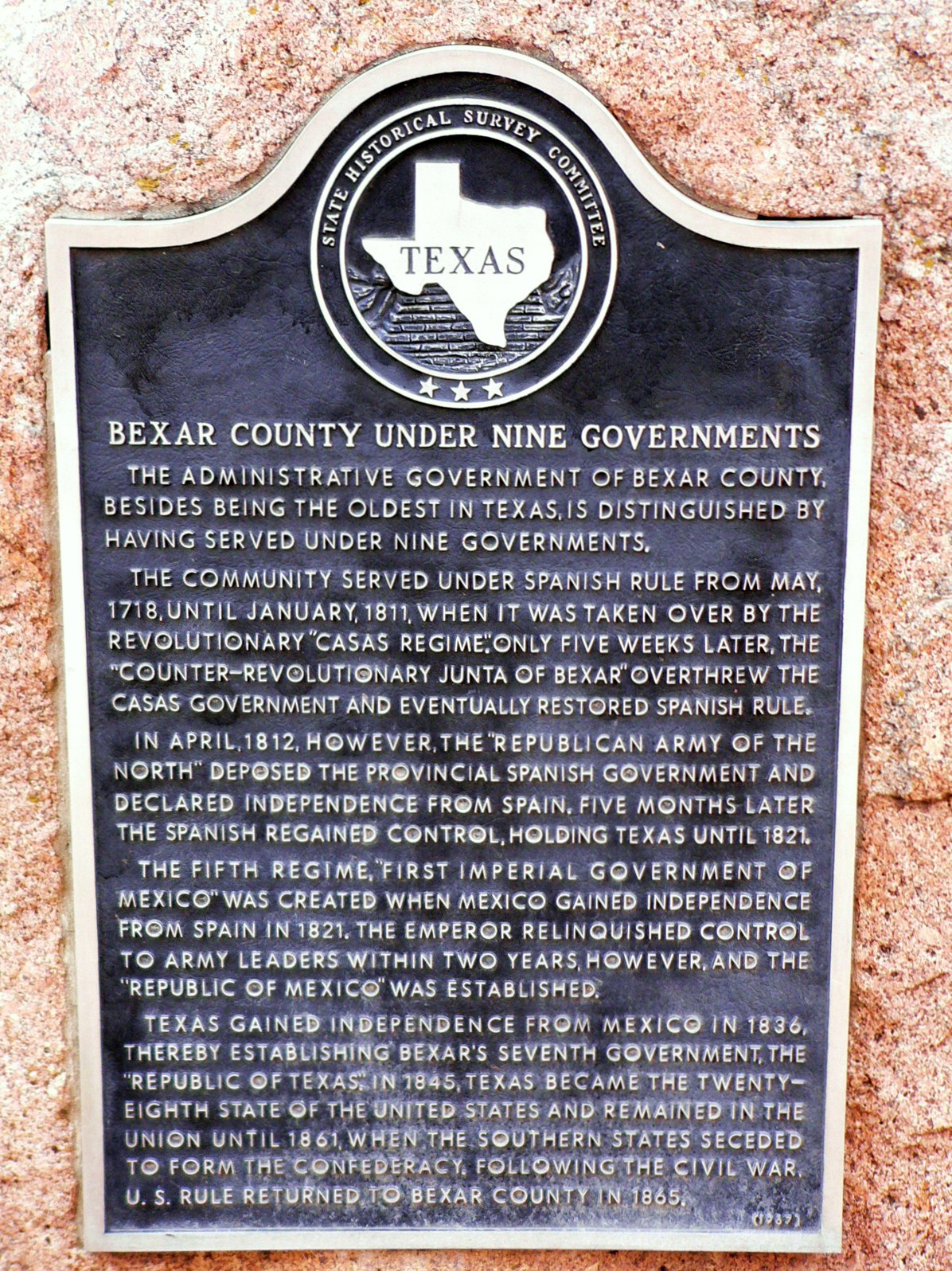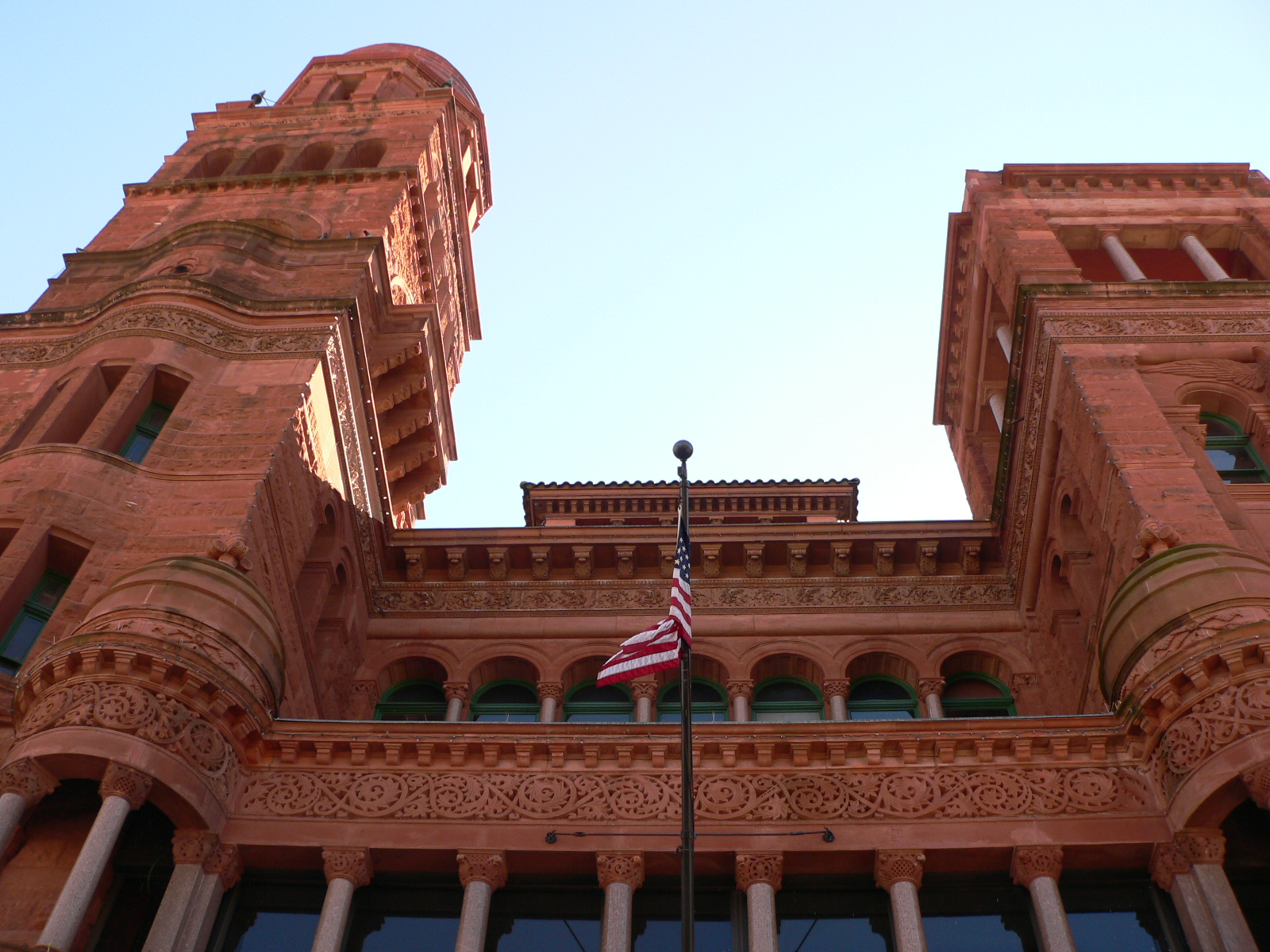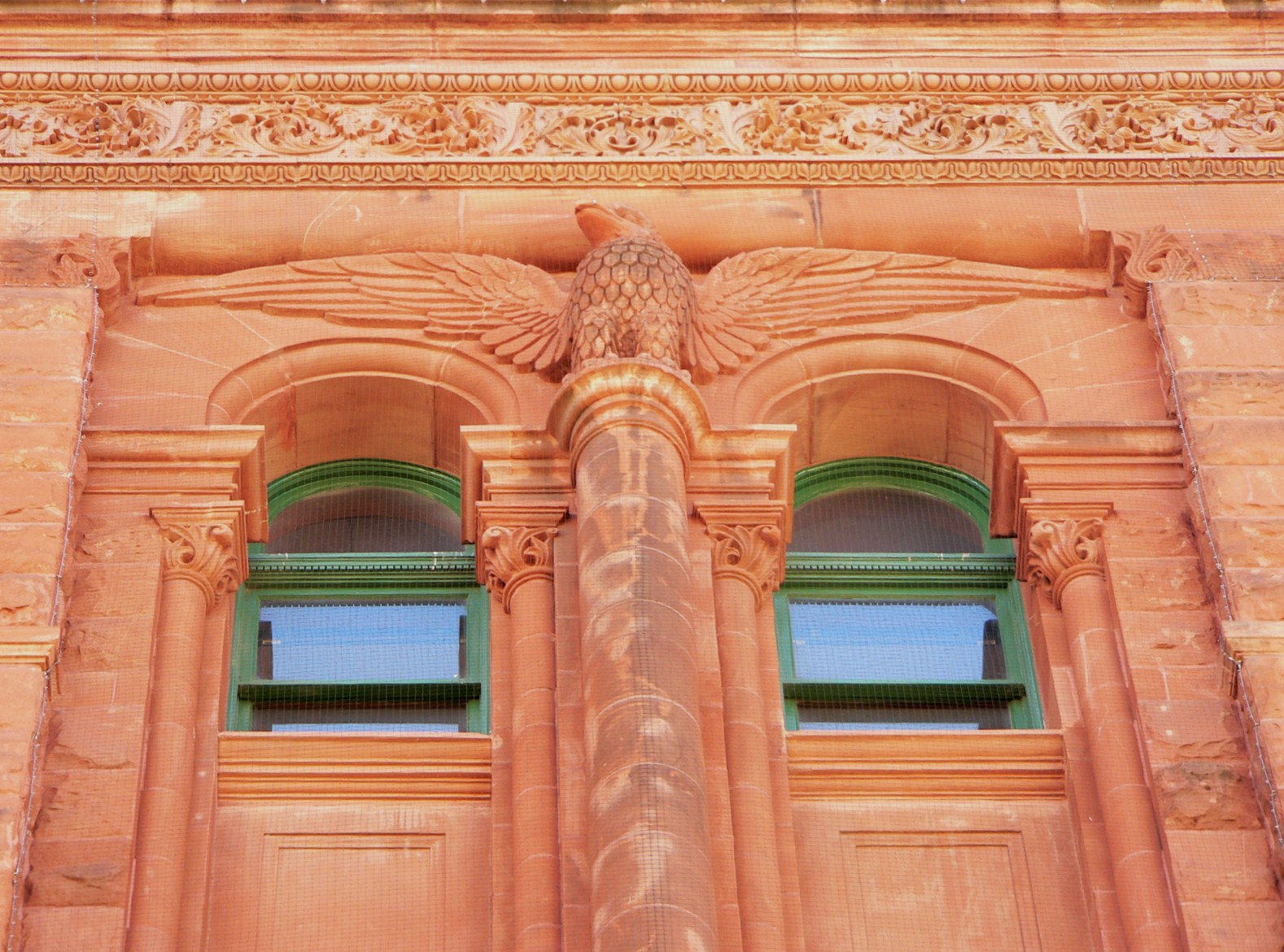County Seat – San Antonio
Built – 1892
Architect – J. Riely Gordon
Style – Romanesque Revival
Photos taken – Sunday, February 13, 2005
San Antonio Express-News article on the Bexar County Courthouse
It was a beautiful day – gorgeous sunshine, no clouds, perfect temperature. Our good friend, Patsy Sachs recently died – just short of her 102nd birthday. Her family had been planning a birthday celebration (her birthday fell on Valentine’s Day) – and scheduled a luncheon on the 13th for close friends and family. She passed away about 10 days prior to that, so they went ahead with the luncheon as a memorial for family and close friends. After we left the luncheon, we decided to take advantage of the weather and take in the Bexar County Courthouse. We certainly did not want to let our hometown courthouse to be our last and Clem felt that winter pictures might be better because the trees around the courthouse still had not put out their new leaves.
As it turned out, the sun was still a little too low in the sky – behind the courthouse, making it difficult to get good lighting. I often found myself shooting into the sun. This is on top of the fact that the courthouse is rather large and impossible to get into frames of pictures. So I think the pictures I have will do.
Bexar County is one of the older areas of Texas and boosts 5 Spanish missions – including the Alamo, which is located downtown. The civilian government of early San Antonio followed the arrival of families from the Canary Islands. In fact, Clem is a Canary Island Descendant. The courthouse is the largest historic courthouse in Texas and is a gem designed by J. Reily Gordon.
The courthouse is impressive (hometown boasting?). Probably not. It is often featured in stories and pictorials about courthouses. It’s color is a very strong sandstone red. And the green tiled roof sets off the red quite well. The front of the building displays the distinctive and unusual beehive tower. The back has its own style and to me, is as impressive as most other courthouses on its own. There is a wonderful arched entry up front, great tiled floors (not included in this photo shoot as it was Sunday), and there are plenty of balconies, towers and gargoyles. All in all, this is probably one of the top twenty in the state, and I assume some put it in the top 5 or 10. I believe I also read somewhere that this is the largest courthouse, as well. Have to check on that later.
Now, Bexar County, when it needed to add to its courthouse, did two different things – at different times of expansion. The first was a physical addition to the original courthouse itself. To me, this is probably the most hideous part of the entire picture. It does not work. Perhaps someday they will find their way to tear it down and restore the original building, but I kind of doubt that will happen. The other addition was built across the street – and is called the law center. This building is lovely, and while the style has no similarity to the original, it does evoke it with stone and color – and it has its own style. I like the law center and the fact the county kept its courthouse and still uses it as an active part of county life.
If you go to the San Antonio Town Square (link above), you will see some pictures from the downtown area, as well as the Cathedral which is located on the same plaza as the Courthouse. Both are well worth your time and visit. San Antonio is full of Spanish and Texana history – probably unlike any other place in Texas.
Texas Historical Commission
Historic Courthouses in Texas
Bexar County Courthouse
J. Riely Gordon designed the courthouse in 1897 using the
Romanesque Revival style. It is one of only four that
represents Gordon’s early Romanesque design style. A 1926
addition on the south facade by Phelps and DeWeese features
the same material and design elements. The building, which is
the largest historic courthouse in Texas, is experiencing
significant deterioration of the exterior sandstone, granite
and terra cotta. Groundwater levels appear to have changed and
begun seeping into the stone foundations. The restoration
project will address all of the historic fabric that is in
danger of loss: restoring exterior stone and terra cotta
elements, investigating water damage, cleaning, pigeon
control, and repairing and replacing cast iron railings.

